
Welcome to iGrow News, Your Source for the World of Indoor Vertical Farming
Ellepot And TTA Enter Strategic Alliance
Danish supplier of the world-leading paper pot system, Ellepot and the world-leading Dutch young plant handling and selection experts, TTA form key partnership targeting forestry sector worldwide.
Global suppliers to the horticulture industry, Ellepot and TTA, have formed a partnership to better serve professional forest nurseries. The partnership is a formalization of many projects which already have been executed in good cooperation. The announcement comes at a time when both companies are realizing the benefits of strategic partnering to achieve enhanced customer service and company growth.
Ellepot developed the unique Ellepot Propagation System – an integrated eco-friendly growing method for healthier roots and high-quality plants that eliminates the need for plastic. Known for their game-changing innovations, within advanced machines for sorting, grading and transplanting, TTA became a market leader and continuously invests in R&D to deliver the best in production equipment for the handling and selection of young plants.
GREATER CONTROL THROUGH THE ENTIRE CHAIN
The two industry pioneers will offer a fully automated system to forestry customers worldwide, where every process is designed to optimize efficiency and production.
“Teaming up with TTA means that we can offer customers an even broader automated package, giving them the opportunity to influence the handling of young tree plants completely,” says Ellepot CEO, Lars Steen Pedersen.
“It is an honour joining forces with such an exceptional global industry player as TTA. Ellepot and TTA can learn from each other and use this synergy to help forestry customers all over the world benefit from improved production processes and quality throughout the entire value chain. We both have a strong focus on creating customer value through increased control in production, and this is the ultimate goal to bring to customers in the future.”
2018 Food Tank Summit (San Diego, CA): Growing The Food Movement
$199 TICKETS
Event Information
The San Diego 1st Annual Food Tank Summit
Wednesday, November 14, 2018
***EARLY BIRD SALE!!! - First 100 Tickets ONLY***
***Tickets are available for $199 and no application is needed. Hurry, this Summit will sell out!***
Food Tank, the Berry Good Food Foundation, and the University of California - San Diego are excited to announce the inaugural San Diego Food Tank Summit! The theme for the Summit is Growing the Food Movement. This exciting event will feature more than 30 different speakers from the food and agriculture field. Researchers, farmers, chefs, policy makers, government officials, and students will come together for interactive panels, fireside chats, and farmer spotlights.
Last year our speakers included Jose Andres, Sam Kass, Tom Colicchio, John Boyd, Kimbal Musk, Dan Barber, Ruth Reichland dozens of others. An additional 90,000 watched each Summit on average via Livestream.
Don't miss this chance to book your spot in person!
As one of the fastest-growing nonprofit organizations in food and agriculture, Food Tank started these Summits four years ago, all in collaboration with major universities and non-profits and bringing together more than 400 speakers for discussions moderated by journalists from outlets like the New York Times, the Washington Post, the Chicago Tribune, Vice, Vox, NPR, BuzzFeed, and Bloomberg.
Delicious breakfast, snacks, and lunch included (with vegetarian, vegan, and gluten-free options).
For sponsorship opportunities, email bernard@foodtank.com. To volunteer, please send your resume and availability on November 13th and 14th to vanesa@foodtank.com with the subject line "Volunteering at the San Diego Summit"
TAGS Things To Do In San Diego, CA Conference Food & Drink
From Seaton’s Basement, This Professor Is Using Aquaponics To Teach Sustainability
October 6, 2018
Kansas State professor of biological and agricultural engineering Stacy Hutchinson pulls dead stems and other plant material from her single-barrel aquaponics system. Hutchinson has run her aquaponics system in the basement of Seaton Hall for around two years, allowing students and other faculty members to assist and/or learn from the system. (Olivia Bergmeier | Collegian Media Group)
Kansas State was built as a college of agriculture, but there is a smaller operation in the basement of Seaton Hall that can help communicate the work of producers to the consumers of the world, Stacy Hutchinson, professor of biological and agricultural engineering, said.
Hutchinson said she uses a single-barrel aquaponics system to help students learn about its use in sustainable farming practices. The system produces vegetables and fish proteins in a circular system where the waste from the fish feeds the plants that then clean the water for the fishes’ habitat.
Kansas State professor of biological and agricultural engineering Stacy Hutchinson poses with her single barrel aquaponics system, where she grows different breeds of lettuce and grows talapia. Hutchinson has run her aquaponics system in the basement of Seaton Hall for around two years, allowing students and other faculty members to assist and/or learn from the system. (Olivia Bergmeier | Collegian Media Group)
“In an aquaponics system, you’re a little more sustainable, because you’re producing both the vegetables, the plant material as well as raising protein,” Hutchinson said.
Kansas State professor Stacy Hutchinson runs her own aquaponics system in the basement of Seaton Hall. “In an aquaponics system, you’re a little more sustainable, because you’re producing both the vegetables as well as raising protein.” (Olivia Bergmeier | Collegian Media Group)
Hutchinson said she oversees one barrel, but her system holds 250 gallons and it holds up to 200 pounds of fish once they’ve matured.
“There’s not much water left at that point, it’s just like a solid fish mass,” Hutchinson said.
An aquaponics system makes it easier to grow protein, unlike with traditional farming practices in beef and poultry, Hutchinson said.
Where it takes a lot of resources to grow those two types of meat proteins in agriculture, an aquaponics system allows for the growth of the protein and the carbohydrates that utilize the same nutrient pool in a circular system, she said. The only input into the system is food for the fish to consume.
“In a very small footprint, you can farm pretty high-quality protein as well as produce you’re vegetables,” Hutchinson said.
Aquaponics is a circular system, meaning the nutrient-rich water from the fish tank below is pumped into the tank where the different vegetables will grow. Hutchinson said, "It’s more sustainable in the fact that you’re recycling fish waste back up into plant food so you don’t have that extra input requirement for the plant food, plus then you’re producing protein which that’s something we have a little harder time farming." (Olivia Bergmeier | Collegian Media Group)
Hutchinson spoke at length about an aquaponics group in Kansas City called the Urban Farming Guys who have tackled a local food desert.
“Jason’s family and the group that he works with went in and set up a lot of garden plots, but they also run a barrel aquaponics system like I’m running,” Hutchinson said.“It’s rejuvenating that area through [an aquaponic] food production.”
“Crime has gone down, people are now wanting garden spots and he’s creating an entire economy off of the urban farming processes and aquaculture is part of it,” she said.
It was not long ago when almost 80 percent of the American population was involved in food production and today there is less than one percent, Hutchinson said.
These beads, located in the highest tank of the aquaponics system, will "catch" algae and other microorganisms to help clean the water for the fish in the lower tank and to help feed the various vegetables. Hutchinson has run her aquaponics system in the basement of Seaton Hall for around two years, allowing students and other faculty members to assist and/or learn from the system. (Olivia Bergmeier | Collegian Media Group)
She said efforts like the Urban Farming Guys and similar operations are where communication between the grower and the consumer are being revitalized.
In what she referred to as the “farmer’s market movement,” people are moving toward more niche or small-town operations that revolve around one-way consumerism and better education about food sourcing.
“You’ve got groups of people now that are producing food at scales that they’re probably not making a full living off of, but they’re connecting back in a way and producing sustainable, high-quality food product that can be sold locally,” Hutchinson said.
International Student Challenge “UrbanFarm2019”
Linked by Michael Levenston - City Farmer News
3 months of time to redesign 3 locations, having a look at the 3 spheres of sustainability. The Grand Finale will take place at the NovelFarm expo in Pordenone Exhibition center in Venice on February 13-14, 2019.
Dr. Francesco Orsini
Researcher, Vegetable Crops and Urban Horticulture
DISTAL – Dept of Agricultural and Food Sciences
Alma Mater Studiorum – Bologna University
This challenge, open to University students from several disciplines and from all over the world, will address the design of urban agriculture projects in three Italian Cities (Bologna, Belluno and Conegliano). The challenge, jointly organized by Bologna and Florence Universities, is also supported by the International Society for Horticultural Sciences. On the website, further information about the awards and components of both the International Jury and the Scientific committee are also available.
The challenge will open on October 15, and two selection steps are foreseen, at December 1st and January 15th. Selected teams will be able to present their innovative project at the International Fair NovelFarm2019, that will take place in Pordenone (Italy), on February 13-14, 2019.
More information will be displayed on the challenge website in the coming days.
Multidisciplinary student teams from the Faculties of Agriculture, Biology, Architecture, Design, Economics, Engineering and Social Sciences, are invited to join the challenge and design innovative urban agriculture systems that integrate the?best architectural and technological innovations for food production in urban environments. Their projects will be based on existing vacant spaces in three Italian cities (Bologna, Belluno and Conegliano), characterized by different peculiarities. Their design should have a strong and entrepreneurial connotation, promoting the generation of new forms of employment for disadvantaged users.
The competition is open to student teams from all over the world, and teams may comprise students from different universities and universities of applied sciences.
REGISTRATION OPENING
1ST ROUND - SELECTION
2ND ROUND - SUBMISSION DEADLINE
‘AI Must Outperform Growers’ Green Fingers’
5 October 2018
Top executive David Wallerstein from the Chinese technology company, Tencent, has recently discovered horticulture. He believes combining Artificial Intelligence (AI) and food production will make it possible to unlock enormous potential.
The CEO of Tencent is Ma Huateng, better known as Pony Ma. But David Wallerstein, an American, is also a kind of CEO at the tech giant – Chief Exploration Officer. Officially, he is Senior Executive Vice President of the Chinese company.
With a stock exchange value of $ 523 billion (€ 429 billion), Tencent became one of the top 5 largest tech companies in the world in autumn last year, behind Apple, Google, Microsoft and Amazon, but just ahead of Facebook. Recently, Mr Wallerstein’s thirst for exploration has lighted upon agriculture and horticulture and in particular on the Autonomous Greenhouse.
Using AI to run a greenhouse autonomously
Mr Wallerstein believes that combining AI with a food production system that is as efficient as possible is “a moral imperative and simply good business”. “What we want for humanity is as many solutions as possible for the issue of food security. Our only option is to commit our brightest talents to creating a food production system that requires decreasing levels of input to achieve an ever-increasing output.”
Will Dutch growers become redundant if the Autonomous Greenhouse challenge is a success?
“Absolutely not. This competition to find the best autonomous cultivation system is intended as a learning opportunity for everyone who participates. Learning how the latest computer technology and AI technology can benefit horticulture and — in practical terms — the entire world population. Complementing the cultivation techniques that we already have. The only people who need to worry are the ones who want to keep using a particular method simply because they have always done it that way.”
‘The complexity of decision making in modern horticulture is growing with the amount of data that is becoming available to growers’
At what stage will this project be deemed a success?
“The winning team will have to overcome two hurdles: it must outperform the other teams with a higher production when compared to the input, and – ideally – it must also defeat traditional cultivation methods. Only then will this definitely be the most convincing business model. And why not?”
“The complexity of decision making in modern horticulture is growing with the amount of data that is becoming available to growers. What I’m hoping the outcome of this project will be is that the competing teams will find new types of patterns and ways of introducing variables to each other.”
Hacking the environment around the plant
According to Mr Wallerstein, what the teams who are looking for a self-governing and self-learning cultivation system are actually going to be doing is “hacking the environment around the plant.” Well-programmed computers may well be able to analyse and control the bigger picture of which raw materials and resources are required, and what conditions have to be influenced and how, to achieve the best possible cultivation results in a different and more effective way than growers are able to do using their green fingers and intuition.
David Wallerstein, American, is a kind of CEO – Chief Exploration Officer – at Tencent, a Chinese tech giant. Officially, he is Senior Executive Vice President. Recently, Wallerstein’s thirst for exploration has lighted upon agriculture and horticulture and in particular on the Autonomous Greenhouse. - Photo: Koen Verheijden
Droughts and soil erosion
“I foresee a big future for distributed agriculture; in other words, no more increasingly large companies that use a few central locations to produce the food for an entire country or continent. That is still how they do things in the US. Three-quarters or more of the fruit and vegetables eaten by Americans are grown in the Central Valley in California. But growers there are facing worsening droughts and soil erosion, and extreme weather caused by climate change is making this kind of cultivation more and more risky.”
So, each town would have its own autonomous greenhouse?
“Exactly. Food produced closer to consumers. Maybe even an autonomous greenhouse for each household. Just like the decentralised generation of energy from the sun with solar panels on residents’ roofs.”
‘Plenty of companies in Silicon Valley are involved in applying AI to marketing and advertising, but I couldn’t find any looking at AI in food production’
What role can Tencent play in developing this kind of new approach to cultivating vegetables?
“We aren’t planning to move everything to China. We are new in Europe, but we really want to come and do business here. So that even more companies want to work in our cloud and use our payment systems. We are looking forward to partnering in projects that help the world to move forwards, such as discovering more effective pharmaceutical products or better materials, or ways in which the cloud and AI can have a positive impact on the everyday lives of all the billions of people on our planet. Plenty of companies in Silicon Valley are involved in applying AI to marketing and advertising, but I couldn’t find any looking at AI in food production. So, I kept searching and found the Autonomous Greenhouse challenge at Wageningen.”
‘I also believe in applying the hacker mentality. Let’s get our hands dirty’
Why Wageningen? After all, there are so many Chinese and American universities to choose from.
“Wageningen is number one in the world. And the Netherlands already has plenty of companies working in horticulture around the world. I‘ve also visited greenhouses in Iceland, all of them using Dutch technology, I’m told. So, if there is anywhere that is a breeding ground for the idea of developing and designing a greenhouse that is largely self-governing, and is capable of utilising this reduced input to increase production, then that place is here.”
And that is something that companies have been working on for years already. Can this competition suddenly accelerate that process?
“It’s down to us at Tencent and at Wageningen University & Research to make the world aware that we are looking for an autonomous greenhouse. I have the utmost confidence in what talent can achieve. If we can find the best talents and teams in the world, and if they can perfect their algorithms, then we can learn a huge amount from this process. Of course, it makes good business sense to want to develop new technology in-house, and to bring this to the market ourselves, but I also believe in applying the hacker mentality. Let’s get our hands dirty.”
Ton van der Scheer
Read more about:
Are Hydroponics The Future of Agriculture?
Unlike traditional agriculture, hydroponic systems use a solution of hydroponic nutrients in water to grow plants. A few benefits have been associated with hydroponics, such as saving time and providing healthier crops
Unlike traditional agriculture, hydroponic systems use a solution of hydroponic nutrients in water to grow plants. A few benefits have been associated with hydroponics, such as saving time and providing healthier crops. This has helped the market to grow and be expected to keep growing for the following years.
According to a report by Research and Markets, in 2017 the global hydroponics market reached a value of US$411.88 million. It’s expected that the market will have a value of US$752.57 million by 2022.
Eco-Friendly Farming
Hydroponics eliminates any need for sunlight, soil, or rain. With many pests originating from the soil, hydroponics reduces the likelihood of pests attacking plants. This also reduces the need for herbicides, insecticides, and pesticides. Additionally, the lack of topsoil use prevents topsoil erosion, which increases the difficulty of soil supporting plant growth and storing water.
With arable land decreasing, it’s vital to have a solution that allows for plants to grow in smaller areas. In traditional farming, plant’s roots tend to spread out and expand so that plants can find oxygen and nutrients. Hydroponics, however, soaks plants’ roots in a nutrient solution full of oxygen, allowing plants to be grown closer together.
Possible Anywhere, at Any Time
Independent of climate and weather, making it possible to be done anywhere and at any time. Occupies less land than traditional farming by growing plants in containers and vertically.
Similar to greenhouses, hydroponics allows for complete climate control. Humidity, temperature, air composition, and lighting is adjusted according to plants’ needs. Crops can be grown anywhere and at any time regardless of the weather or the season.
Faster Plant Growth
Hydroponics are more efficient than traditional farming methods, as less water is used than with traditional agriculture. Water used in hydroponics can be recycled many times. This re-circulation prevents wastage and evaporation, as the water reaches the plants’ roots.
Plants grow faster, which allows for bigger yields in short periods of time. Crops flourish in a controlled environment and, with hydroponics having a shorter growing cycle, yields can easily be doubled or tripled.
Healthier Crops
Protection from pests and diseases provides healthier crops and stops the fear of the former spreading to other plants or future crops. Powdery mildew and root rot, for example, can affect the following year’s crops and hinder recovery.
Additionally, hydroponics remove the uncertainty of why plants may be struggling. You have control over your plants’ environment and you can easily balance their pH levels, the nutrient solution, and create a customised environment for every crop.
Control Over Nutrients
With complete control over all resources and nutrients needed by the plants, hydroponics help plants receive more nutrients than through traditional farming. Specific values of nutrients for specific plants are easily mixed with water, reducing the nutrient changes or losses naturally occurring in the soil.
This futuristic concept of growing plants in vertically-stacked layers is often done in indoors through growing methods such as hydroponics. Even in extreme and challenging environments, hydroponics might be a solution for unavailable land for agriculture.
How Do We Feed 7 Billion People?
We're looking at the technological advancements that allow us to feed our ever-growing population.
10,000 years ago, our ancestors lived a completely different lifestyle. They were nomadic people living in small groups, constantly moving in migratory patterns and hunting and gathering their food. Today, the majority of the seven billion people living on the planet have permanent residences in, or near, major cities. Most of us have easy access to clothing, food, and home goods. While there have been thousands of developments over the past 10,000 years that have bridged the seemingly impenetrable gap between ancient hunters-gatherers and modern consumers, none has been more impactful than the advent of agriculture.
Today, we define agriculture as the practice of cultivating soil, producing crops, raising livestock, and (to some extent) the preparation and marketing of the resulting products. Agriculture represents 20% of the national economy, and is the one of the most compelling reasons that our global population has boomed.
While agriculture has a long history, the greatest leaps in technology were made in the 18th-21st centuries. We decided to look at five main categories of technological development that have made the greatest impact on the global population: animals, crops, soil, labor, and storage.
**Quick disclaimer: these categories focus on the history of agricultural technology in Western Europe and the United States. While we recognize and celebrate the diversity of historical and cultural differences that exist between the Western world and other regions, we’re focusing on these regions for the sake of making this (somewhat) brief and easily digestible!**
Before we get into the technology that changed agriculture, let’s quickly review just some of the major scientific discoveries that made much of this progress possible.
1855 | Theory of Mineral Nutrients
Research performed originally by scientist Carl Sprengel and popularized by Justus von Liebig identified that nitrogen (N), phosphosus (P), and potassium (K) are essential for plant nutrition. They also published findings that plants take carbon, hydrogen, and water out of the atmosphere. Additionally, Liebig popularize the Law of the Minimum, which stated that a plant’s growth is not determined by the total amount of resources available, but by the resource that is least available.
1859 | Darwin’s Theory of Evolution
Darwin proposed a theory of evolution by natural selection, where changes that allow an organism better adapt to its environment will help it survive and have more offspring, thus creating a lineage with altered and improved characteristics. This theory was made through observations only; Charles Darwin had no knowledge of genetics and the impact of genetic mutations.
1866 | Mendelian Inheritance
Mendelian inheritance is the longest standing theory of genetics that is still applicable today. It was developed by Gregor Mendel after he performed experiments with pea plants, which deduced that genes come in pairs and are inherited as distinct units, one from each parent. This became the basis of our understanding of human, plant, and animal genetics!
Here's a great overview of Mendel's theory!
Now that we know the basics, let’s look at the technology that paved the path to today’s agro-industrial complex. It’s important to understand that all of these advances needed each other to develop, as breakthrough technology in one category created opportunity for the others to expand.
Animals
Most agricultural progress seen in the meat and dairy industries had to do with increasing production. As a result, meat and dairy products became more affordable, and became more prevalent in Western diets.
c. 1760 | Selective Breeding
Robert Bakewell, one of the first agriculturists to breed cows and sheep for meat, was a pioneer of selective breeding methods. Selective breeding involved mating animals to reproduce favorable qualities in the offspring (such as bigger, more muscle, better wool production, etc). Although Bakewell lived before Darwin and Mendel, his practice of selective breeding aligned with both theories of genetic inheritance. Selective breeding later became a cornerstone for the factory meat industry as ways to create animals with higher meat, eggs, or milk outputs.
Example: the Belgian Blue Cow
The Belgian Blue cow's genetic make-up makes it more efficient at gaining muscle mass. This gene mutation was maintained through line breeding to make it a fixed property of the breed!
1865 | Pasteurization
Louis Pasteur’s research showed that microorganisms were the reason for food spoilage. He found that heating liquids like milk to between 60 and 100ºC killed most of the bacteria. This process became known as “pasteurization”, and it’s discovery made it possible to preserve and transport dairy goods much longer and further than ever before.
1926 | Penicillin
Alexander Fleming discovered penicillin, the world’s first antibiotic. It was successfully used to treat infection in 1930, and was mass-produced in the late 1940s. As factory animal farming became more prevalent, animals began receiving antibiotics to prevent viruses such as rotavirus, E. coli, pinkeye, and brucellosis. This allowed for animals to adapt to close and often unsanitary living conditions of feedlots that made meat abundant and affordable.
1994 | rBST
Patented by Monsanto, rBST is a synthetic cow hormone. When administered to dairy cows, the hormone increases milk production 14 percent, while consuming less grain and water. This allowed the dairy industry to expand and increase their output.
Crops
Similarly to the meat and dairy industries, advancements in crop production were mainly concerned with increasing crop yields. Thanks to the creation of more resilient breeds of corn and soy, along with long-standing government support for these commodity crops, most farmland moved towards single crop production (also known as monocultures). Furthermore, crop resilience helped create food reserves and drastically reduced famine around the world.
1908 | Hybridized corn produced
George Harrison Shull showed that a hybrid corn plant created from two inbred species would increase the plant’s yields significantly. In 1924, hybrid seeds were sold commercially and by the 1950s the majority of U.S. corn was hybrid. This development allowed corn to become a dependable commodity crop that would later be used as nutritionally dense animal feed (making animals fatter faster) and for producing penicillin (1940), high fructose corn syrup (1970s), ethanol (1970s), and more.
See how corn, watermelons, and peaches have changed thanks to selective hybrid breeding over the past 9,000 years.
1930 | Mutation breeding
A practice started in 1930 and still used today, mutation breeding uses radiation to create random mutations in seeds. Thanks to this practice, scientists have produced thousands of improved plant varieties (rice, wheat, barley, peas, cotton, peanuts, grapefruit, bananas, and cassava to name a few). This is not genetic modification, but a way of nudging species towards useful mutations that make them more productive and resilient.
1937 | Hydroponics
Although principles of hydroponics have been around for centuries, they were popularized by Dr. W.F. Gericke, who displayed enormous tomatoes that were grown without soil. By the 1960s, many hydroponic greenhouses and farms were operating around the U.S. as a first example of alternative farming methods.
1939 | Synthetic Pesticides
Paul Muller discovered DDT, a broad spectrum synthetic pesticide that had a widespread effect on insects, but a seeming low toxic effect on mammals. It was not water soluble and was easy and inexpensive to apply. While it was later proven that DDT was toxic to aquatic animals and had many indirect negative effects on the environment, this was the first widely adopted and inexpensive pesticide which greatly increased food supply and decreased plant disease.
1940s | The Green Revolution
In the 1940s, scientist Norman Borlaug began performing experiments in Mexico to develop disease resistant, high-yield wheat crop varieties in an effort to make Mexico more self-sustainable. He succeeded, and Mexico became a global exporter of wheat. Borlaug and the Ford Foundation replicated this success in India in the 1960s with high performance rice (IR8), which allowed India to become a global rice exporter. The IR8 rice strain was later adopted all over Asia.
1994 | Flavr Savr tomato
The Flavr Savr tomato was the first commercially produced genetically modified food to be deemed safe for human consumption. It was created by Calgene, a company later acquired by Monsanto. Since 1994, Monsanto has produced several genetically modified products like squash and soy in 1995, corn in 1996, sugar beets in 2006, potatoes in 2016, and, most recently, apples in 2017. Most genetic modifications are designed to make food insect and disease resistant, tolerant to herbicides, and more visually appealing.
Soil
Although soil-less methods like hydroponics and aquaponics have become increasingly popular over the past century, most global agriculture is still soil dependent. Historically, advancements in soil technology has been centered around replenishing and extracting as many nutrients as possible to improve plant yields.
1842 | Superphosphate
Patented by Sir John Bennet Lawes, superphosphate was a manure formed by treating phosphate with sulfuric acid, which gave rise to the synthetic fertilizer industry. Once it was adopted, the commercial fertilizer took the agricultural industry by storm: In less than 100 years, annual commercial fertilizer use has gone from 1.8 million tons in the 1890s, to 47.4 million tons in the 1980s.
1910 | Nitrogen fixation
As Liebig determined in his research, nitrogen is essential for plant health. Fritz Haber created a process for pulling N2 out of the atmosphere and turning it into ammonia (i.e. nitrogen fixation) to be used as fertilizer for industrial feedstocks. The process was perfected and scaled to meet industrial needs by Carl Bosch.
Labor
For centuries, agricultural development was limited by time: men and horses could only do so much in one season. The development of farming machinery unlocked huge potential, which technological animal, crop, soil advancements were able to fill.
1793 | Cotton gin
Invented by Eli Whitney, the cotton gin was one of the greatest contributors to the American Industrial Revolution. It greatly simplified the process of removing seeds from picked cotton–previously an extremely slow and tedious process. While the cotton gin inadvertently led to the rise of slavery in the South, it is still considered one of the most influential agricultural inventions of the 20th century.
1842 | Grain elevator
Developed by Joseph Dart and Robert Dunbar at the rise of the grain trade. The grain elevator was originally a steam-powered deposit for grain awaiting to be sold. Steam-powered conveyor belts brought the grain to a storage platform at the top of the elevator, where it was kept until offloading. Then, the grain would be brought down using gravity, and loaded onto trains or ships for distribution. Not only did the creation of elevators significantly reduce labor, but they also kept the grain “dry, cool, free from vermin, and safe from pilferage”.
1892 | First gasoline tractor
Invented by John Froelich, the tractor was able to harvest 1,000 bushels of grain using only 26 gallons of gasoline, which far exceeded the harvesting capacity of farmers–it took 40-50 labor hours to harvest just 100 bushels using wagons and horses. By 1954, tractors exceeded the use of horses, and by 1955 the labor needed to harvest 100 bushels was reduced to just 6.5 hours.
Storage
While decreased labor hours were able to bring an abundance of food to the market, it was pointless without refrigeration. Food cooling and freezing technology expanded food’s lifespan, made it easier to transport long distances, and allowed people to buy for the future.
1856 | First commercial refrigerator
The first refrigerator, built by James Harrison and patented in 1856, was a vapor compression system using ether, alcohol, or ammonia. He introduced the technology to breweries and meat packing houses, and had several systems in operation by 1861.
1867 | Refrigerated shipping
The first refrigerated railway car was patented by J.B. Sutherland. It used heavy insulation, roof hatches, floor drains, ice bunkers, and strategic airflow. As a result of this cold transport system, a huge network of icing stations were developed around the country, and the first transcontinentaltransport of cold goods from California to New York occurred in 1889.
1927 | Frozen foods
The birth of the frozen food industry is tied to Clarence Birdseye’s patent for a multi-plate freezing machine, which allowed for food to be quickly frozen without damage. By 1927, his frozen products included fish, meat, poultry, fruit, and vegetables. Birdseye later sold his patent to what eventually became the General Food Corporation to produce the Birdseye Frozen Food Company. By World War II, Americans were encouraged to buy frozen foods, with 800 million poundspurchased between 1945 and 1946. However, it was the invention of the TV dinner that made frozen food an American stable in 1954.
1930s | At-home fridge
Companies like Electrolux and General Electric began selling refrigerators and freezers for domestic purposes at a commercial scale. Unlike previous models, these units used Freon instead of toxic gases, making it a safer option. This coincided perfectly with the development of frozen foods (as we learned above!). By 1950, more than 90 percent of urban homes had a fridge.
So, where do all of these technological advancements leave us today?
For one, they have made it possible to feed over 7 billion people: From 1820 to 1975, agricultural production across the world doubled four times over and, while in 1940 one farmer could supply an estimated 10.7 people, by 1990, one farmer could supply 100 people. Today, one farmer can feed 155 people. As a result, we have seen a global decline famines and hunger, with a rate of undernourishment at 10.8 percent in 2015 (although this number has risen in recent years as a correlation to rising conflict and instability in many regions).
For most of its history, agricultural technology was focused on creating a more efficient and high-yielding system in order to better feed the world. As we can see, with reductions in labor and hunger worldwide, we were widely successful. Unfortunately, many of the methods used over the past 300 years have created negative effects that we are now only beginning to understand. Issues associated with Big Ag (the entire corn-soy-meat industry combined) include:
Soil nutrient degradation due to planting one type of crop over and over again, leading to a dependence on synthetic fertilizer.
Extreme water usage and waste.
The chemical contamination of groundwater (as a result of fertilizer usage).
The introduction of dangerous pesticides and herbicides into the ecosystem and their widespread repercussions on insect and animal populations.
Introduction of new bacteria and pathogens into the food supply–a result of factory farmed animals living in unsanitary conditions.
The development of antibiotic resistant bacteria as a result of antibiotic overuse in factory farmed animals.
Environmental pollution caused by machinery and animal excretions.
Rising rates of “western” diseases such as obesity, heart disease, cancer, and diabetes as a result of over consumption of readily available corn, soy, and meat products.
As a result, many of today’s newest technologies are focused on creating alternative methods of agriculture that will be more environmentally sustainable, as well as viable options in the face of climate change and increasingly irregular weather patterns.
2010s | Urban farming
While urban farming has existed throughout history, it has recently turned into a full-blown movement: Issues of local food access and healthy eating have made urban solutions necessary in the face of Big Ag. Hydroponic technology is a viable solution–companies like Freight Farms (2010) use repurposed shipping containers to create dense growing environments in small footprints. Similarly, many cities make use of of rooftops to set up greenhouses or even soil farms, like Gotham Greens (2009) or Brooklyn Grange (2010)
2010s | Data
Just as urban farming boomed starting in 2009, so did the agricultural data industry. Farm management software such as Spensa Technologies (2009), Mavrx (2012), farmhand (2013) Granular (2014), Trace Genomics (2015), and many others arrived on the market to give farmers more transparency into their farmland using satellite imaging, sensors and IoT technology, robotics, and more! The goal is to increase efficiency, and help farmers implement eco-friendly solutions easily on a large scale.
2013 | BountiGel
Company mOasis has created a hydrophilic gel (“hydro” = water, “phillic” = loving) that can be added to soil to absorb 250 times its weight in water. As a result, farms can use less water and improve their yields by 18 percent across the board. The gel is non-toxic and can break-down safely after several seasons. California approved mOasis’ first product for commercial use in November 2013.
2013 | Cultured Meat
This is perhaps the most extreme solution to many of the problems we see with factory farmed meat today, which requires huge amounts of water, pollutes the environment, and produces 14.5% of global human greenhouse-gas emissions. Lab-grown meat would help address the growing global demand for affordable meat while leaving a less damaging footprint. The world’s first lab-grown burger was introduced in August 2013.
2013 | Robotic Bees
The first robotic insect took flight in May, 2013 at Harvard University. It was based on the anatomy of a small fly, and inspired more projects in Japan which went on to create a robotic bee. The need to develop this technology is urgent: the U.S. alone has lost 44% of it’s honeybee population in 2016, leading experts to consider what a world without our most essential pollinators might be like. Even industry giants like Walmart are getting involved in developing this technology.
Innovation Power of Start-Ups, Research Institutes And SMEs in The Future of Food And Biomass Production
Whether for digitisation in agriculture, urban and marine farming, improved crop efficiency or the production of sustainable protein, start-ups, SMEs, and research institutes play a major role in bringing innovation into the market.
Which technologies are available today and who are the major inventors actively contributing to the development of the nine innovation areas of food industry? At the conference "Revolution in Food and Biomass Production (REFAB)" in Cologne, 1 - 2 October 2018, leading founders and researchers will share their novel products and developments to help shape the future of food production.
The digitisation of the agriculture is one of the promising fields where the number of start-ups increases, blooming with their solutions to support farmers achieving more efficiency and protecting their crops from unexpected climatic conditions. India is a great example of a thriving innovation ecosystem. Nimbkar Agricultural Research Institute (IN) is a representative of the digital movement in agriculture. They will present the possibilities of these technologies to shape the future of Indian farming at the REFAB conference.
At the same time, European research on robotic solutions for precision farming has advanced remarkably, which will be presented by the Centre for Robotics in Industry and Intelligent Systems (PT) and the Flourish (CH) EU funded project. Meo Carbon Solutions (DE) with ISCC certification system is the first government-approved certification for sustainability and greenhouse gas savings that can be used gobally for all types of biomass and its derivatives.
Worldwide, the interest in the development of microorganisms as biostimulants, biocontrol agents and agricultural probiotics has grown rapidly over the last two decades. Solutions on how to use the potential of microorganisms for biostimulation purposes and their delivery onto the field will be presented by French start-ups BIOVITIS (FR) and Kapsera (FR). Integration of mycorrhizae and nano-biostimulants and challenges and opportunities of arbuscular mycorrhizal fungi applications will be presented by a well-known research institute TERI-Deakin Nanobiotechnology Centre (IN) and the Austrian start-up Evologic Technologies (AT) accordingly.
Home, urban and vertical farming will play a central role in the future food supply of metropolitan areas. While Farmers Cut (DE) and Click & Grow (EE) provide home gardening solutions with fully automated cultivation methods, SPREAD (JP) contributes to the vertical farming movement in Japan by achieving profitable operation of their large-scale vertical farms. German leading research Institute Fraunhofer Institut für Umwelt-, Sicherheits- und Energietechnik UMSICHT (DE) will present their findings within the inFARMING® project.
LED lighted greenhouses, desalinization of seawater (in combination with aeroponic, hydroponic and aquaponic systems) as well as solar technologies and closed biomass cycles open up completely new areas for food production under the most extreme conditions. Several companies are already successfully commercializing these systems, such as Teshuva Agricultural Projects (IL), the Sahara Forest Project (NO) and SEKEM Development Foundation (EG), which have exhibited how food can be grown in desert. Going one step further, the European Space Agency (NL) and Wageningen University & Research (NL) will showcase their already successfully tested food production in moon and Mars soil simulant.
Improved plants are of major importance for food security in the future, where climate change will create overall harsher conditions that make it difficult for farmers to protect their crops. What are current developments of global genetically modified (GM) crop cultivation, how can improved photosynthesis result in increased crop yield and how can GM methods be applied to tree breeding and the development of vegetables? Nova-Institut (DE), Wageningen University & Research (NL) and SweTree Technologies (SE) will provide answers to these questions at REFAB conference.
The proteins of the future should have reduced climate impacts. Upscaling of sustainable insects, solar proteins, artificial meat and plant-based proteins will be crucial. A number of exciting products are already on the market and science is preparing us for even more. Success stories will be presented about two different CO2-based foods (Solar Foods (FI) and Kiverdi (US)), the famous plant-based “Impossible Burger” (The Good Food Institute (US), cellular agriculture, including meat from cells (VTT Technical Research Centre of Finland) and the old, well known source of protein: insects (Ynsect (FR), VITO (BE), KU Leuven (BE), AgriProtein (ZA)).
Organic farming and smallholder production methods will greatly benefit from many of these new developments by increasing efficiency while respecting their original ideals and principles. Dr. Bronner’s Magic Soaps (US), BioInnovate Africa Programme (KE) and Berlin-Institut für Bevölkerung und Entwicklung (DE) will present their experiences and knowledge how smallholders and organic farming can become ready for the future worldwide.
Leaving land-based food production, the ocean has much to offer besides traditional fish farming and, as of today, we only use a fraction of its potential. New concepts of sustainable aquaculture dissolve the borders between land and ocean. Aquaponics Iberia (PT) and Smart Floating Farms (ES) develop concepts for the urban aquaponic systems while the latter integrates these with other technologies, such as hydroponics, aquaculture and solar energy as modular floating platforms for local food production.
Additionally, the potential of microalgae in food and feed is a topic of large discussion and will be elaborated on by the Wageningen University & Research (NL). An example of cultivation and processing of seaweeds (microalgae) up to final fabrication of food products will be presented at REFAB by Seakura (IL).
Last but not least, new biotechnological and chemical processes enable biorefineries to produce proteins, flavours, fibres, chemicals and plastics sustainably and efficiently from various biomass. Biorefineries and biotechnology are the future for the production of these products. At REFAB, applied state-of-the-art technologies are shown by Godavari Biorefineries (IN), using waste streams from sugar and sugar cane, and Phytowelt GreenTechnologies (DE) will present how the production of flavours with biotechnological methods has succeeded.
These and more projects and prominent companies will be presented at the conference “Revolution in Food and Biomass Production (REFAB)”, 1-2 October in Cologne, Germany. Altogether, 56 speakers and exhibitors will show the future of food and biomass production (www.refab.info).
Already 172 participants from 22 countries are registered. Dr. Bronner’s (US) and BIOCOM AG (DE) are bronze sponsors of the conference. The Fachagentur für Nachwachsende Rohstoffe e.V. (DE) supports the event as premium partner.
2018 Food Tank Summit (New York City): Focusing On Food Loss and Food Waste
Wed, October 3, 2018, 9:00 AM – 5:00 PM EDT
$249 TICKETS
The New York City 2nd Annual Food Tank Summit
Food Tank, Natural Resources Defense Council, New York University, Hunter College NYC Food Policy Center, ReFED, and The Rockefeller Foundation are excited to announce the second annual NYC Food Tank Summit.
Wednesday, October 3, 2018
***EARLY BIRD SALE!!! Only $249! Only 50 Tickets Left at this Price***
***Hurry, this Summit will sell out!***
This exciting event will feature more than 30 different speakers from the food and agriculture field.
Last year in New York we had Tom Colicchio, Sam Kass, Kimbal Musk, Ruth Reichl and dozens of others and the event sold out quickly with a waiting list of 1,400. An additional 90,000 watched via livestream. Don't miss this chance to book your spot!
2018 speakers include (one announced every weekday starting July 23th):
Marion Nestle, best-selling author and professor emeritus at New York University; Dan Barber, is a best-selling author, chef, and co-owner of Blue Hill and Blue Hill at Stone Barnes, along with Row 7 Seed; Dickie Brennan, Owner and Managing Partner of Dickie Brennan & Company; Celebrity Chef Tim Ma, Kyirisan; Caity Moseman Wadler, Executive Director Heritage Radio Network; Julia Moskin, New York Times; and Brad Nelson, Vice President, Marriott International.
As one of the fastest-growing nonprofit organizations in food and agriculture, Food Tank started these Summits four years ago, all in collaboration with major universities and non-profits and bringing together more than 400 speakers for discussions moderated by journalists from outlets including the New York Times, the Washington Post, the Chicago Tribune, Vice, Vox, NPR, BuzzFeed, and Bloomberg.
Breakfast, coffee/tea, snacks, and lunch included (vegetarian, vegan, and gluten conscious options).
For sponsorship opportunities, email bernard@foodtank.com. To volunteer, please send your resume and availability on October 2nd and 3rd to vanesa@foodtank.com with the subject line "Volunteering at the New York Summit."
TAGS Things To Do In New York, NY Conference Food & Drink
SHARE WITH FRIENDS
DATE AND TIME
Wed, October 3, 2018
9:00 AM – 5:00 PM EDT
LOCATION
Tishman Auditorium
Vanderbilt Hall
40 Washington Square S
New York, NY
REFUND POLICY
No Refunds
ORGANIZER FOOD TANK
Organizer of 2018 Food Tank Summit (New York City): Focusing on Food Loss and Food Waste
Food Tank is a non-profit organization focused on building a global community for safe, healthy, nourished eaters. We spotlight environmentally, socially, and economically sustainable ways of alleviating hunger, obesity, and poverty and create networks of people, organizations, and content to push for food system change.
AgFunder Just Released The Inaugural China AgriFood Startup Investing Report
AgFunder just released the inaugural China AgriFood Startup Investing Report in collaboration with our report partner Bits x Bites. The report covers technology startups operating across the agrifood value chain as well as other non-tech startups disrupting China’s agrifood industry.
In 2017, Chinese agrifood startups raised $1.8 billion of investment across 177 deals with 198 participating investors.
The vast majority of startups featured in the report are building businesses downstream at the consumer end of the agrifood supply chain, to answer the growing middle class's demand for premium products - a major driver for the overall Chinese economy - as well as convenience.
Startups operating upstream raised just $106 million across 28 deals as scattered farmland and complicated supply chains make it difficult for upstream startups to gain momentum in China.
China's position as the global leader in e-commerce shone through as the eGrocery segment raised the largest amount of investor funding at $814m.
Technology-enabled "new retail" built a lot of hype during the year, driving $565 million of investment in In-Store Retail & Restaurant Tech but 90% of the startups offering unmanned store and vending machine technology had failed before the end of the year, according to local media reports.
China's three technology giants Baidu, Alibaba and Tencent (BAT) were key players in the sector during the year investing $741 million in agrifood startups (41% of total) and responsible for $5.8 million in M&A.
Find out more about the key deals and investors driving China's fledgling agrifood startup sector here:
Download the FREE 32-page report here
Michael Dean, CIO, and the AgFunder team
About AgFunder
AgFunder is an online Venture Capital Platform investing in the bold and exceptional entrepreneurs transforming our food and agriculture system. Our in-house technology enables us to invest globally and at scale, make better investment decisions,and supporting our portfolio companies. Through media and research, AgFunder has built a community of over 50,000 members and subscribers, giving us the largest and most powerful network in the industry.
Stay up-to-date with AgriFood Tech Startup news, and other reports, by signing up to our newsletter here.
CAN (QC): 2,000 Square Feet of Gardens To Be Added To School
Villa Maria is launching its new Techno-Farm program, an urban agriculture and composting project to be carried out on the School's campus. With this educational project, the school seeks to encourage its students and their parents to become more eco-responsible.
Involving the creation of more than 2,000 square feet of garden plots as well as the implementation of a composting program, the urban Techno-Farm offers students a variety of learning activities: observation visits, thematic workshops, production workshops (various sensors, composting systems) as well as data analysis workshops.
"We invite Villa Maria's students at every level to get involved and contribute to the project within the framework of their extracurricular and Academics+ activities. This initiative will allow students to lead a series of ongoing scientific experiments and engineering projects enriching their scientific knowledge. They will also have the opportunity to apply concretely, many elements of their study program," noted André Cholmsky, one of the School's teachers.
Villa Maria's Techno-Farm received funding from the NovaScience program, an initiative of Québec's Ministère de l'Économie, de la Science et de l'Innovation (Ministry of Economy, Science and Innovation), which supports a better understanding of science and technology. The Techno-Farm is also supported by Building Blocks Tutorials, the Villa Maria Parents Association, the Villa Maria Parent-Teacher Association and the Villa Maria Mothers' Guild.
Within the framework of the NovaScience program, visits, workshops and long-term projects will also be organized for other schools. "This project will further make it possible to raise awareness, among students of neighbouring schools, of the small-scale use of agricultural technology, agricultural science and composting as well as the broader notions of eco-citizenship and sustainable development. Once harvests are adequate, plans call for distributing the gardens' produce to community organizations," concluded Villa Maria teacher Rebecca Pearce.
For more information:
www.villamaria.qc.ca
Publication date : 9/18/2018
"North American Diets Require More Land Than Available"
The researchers found that global adherence to United States Department of Agriculture (USDA) guidelines would require one giga-hectare of additional land—roughly the size of Canada
If the global population adopted recommended North American dietary guidelines, there wouldn’t be enough land to provide the food required, according to a new study co-authored by University of Guelph researchers.
hoto by Gary Csoff
The researchers found that global adherence to United States Department of Agriculture (USDA) guidelines would require one giga-hectare of additional land—roughly the size of Canada—under current farming practice. Their findings were published in PLOS ONE.
“The data shows that we would require more land than what we have if we adopt these guidelines. It is unsustainable,” said Prof. Madhur Anand, director of the Global Ecological Change and Sustainability lab where the study was undertaken.
Prof. Madhur Anand
“This is one of the first papers to look at how the adoption of Western dietary guidelines by the global population would translate into food production, including imports and exports, and specifically how that would dictate land use and the fallouts of that,” she said.
Although the dietary guidelines are viewed as an improvement on the current land-intensive diet of the average American, the researchers say that dietary guidelines should be further developed using not just health but also global land use and equity as criteria.
“We need to look at diet not just as an individual health issue but as an ecosystem health issue,” said Anand, a professor in U of G’s School of Environmental Sciences (SES).
The authors found a strong east-west division worldwide. Most Western Hemisphere countries would use less land by adopting a USDA guideline diet, while most Eastern Hemisphere countries would use more land.
Co-authors of the paper are U of G Prof. Evan Fraser, holder of a Canada Research Chair in Global Food Security; SES graduate student Sarah Rizvi; Chris Pagnutti, an NSERC post-doctoral researcher in SES; and Prof. Chris Bauch, Department of Applied Mathematics, University of Waterloo.
“We need to understand human and environmental systems in a coordinated manner, and this is where the interdisciplinary aspect of the work shines. This is also why we worked with an applied mathematician,” said Anand.
The authors call for international coordination of national dietary guidelines because global lands are a limited resource.
Prof. Evan Fraser
“This could be similar, at least in principle, to how greenhouse gas emissions are increasingly being coordinated internationally to address another major global problem: climate change,” Anand said.
Fraser, scientific director of the Food from Thought project and director of the Arrell Food Institute at U of G, added: “One of the 21st century’s great challenges is to develop diets that are both healthy for our bodies and sustainable for the planet.
“Developing the technologies and insights to help industry and consumers is part of what many of us at the University of Guelph are working on through the Food from Thought initiative.”
This research was supported by an NSERC Discovery Grant and is associated with the University of Guelph’s Food from Thought project, supported by the Canada First Research Excellence Fund. The project is intended to increase the sustainability and productivity of global food production through leading-edge data science, agri-food research and biodiversity science.
Source: University of Guelph
Publication date: 8/10/2018
Crop One CEO Sonia Lo to Speak on Panel at Inaugural ING Food and Agribusiness Event
“Think Forward: The Future of Food” is the premier invitation-only forum at the nexus of food and agribusiness.
September 20, 2018 14:00 ET | Source: Crop One Holdings, Inc.
SAN MATEO, Calif., Sept. 20, 2018 (GLOBE NEWSWIRE) -- Crop One Holdings, the world’s largest vertical farm operator through its FreshBox Farms brand, announced today that Chief Executive Officer Sonia Lo will participate in a CEO panel discussion at ING’s inaugural food and agribusiness event, “Think Forward: the Future of Food,” on September 27, 2018 at 11:30 AM CT at the Nasher Sculpture Center in Dallas, Texas.
“Think Forward: The Future of Food” is the premier invitation-only forum at the nexus of food and agribusiness. The inaugural event hosted by ING’s Food, Beverage, & Agribusiness Group, brings together business and thought leaders to discuss the future of food production and consumption in the United States. The CEO panel joins four leading food and agribusiness CEOs, including Ms. Lo, to discuss how they are looking to the future and what they see on the horizon for their industry.
In addition to needing to feed an estimated global population of 10 billion people by 2050, the agribusiness sector is dealing with changing consumer preferences, globalization, an increased focus on sustainability and innovation, margin pressure and climate uncertainty. As the leading developer, operator and systems integrator in the vertical farming space, Crop One and Ms. Lo are perfectly suited to provide an innovative perspective on the future of food.
In addition to the CEO Panel, a number of other panels will be featured at the event and include:
Farming on the frontline - How are recent developments in the trade arena impacting the US agribusiness sector?
Innovation and agriculture – A presentation on the culture of Amazon Web Services and its interaction with innovation and agriculture
Preparing for Tomorrow’s Consumer Today - A discussion on how changing customer tastes and preferences are shaking up the food industry
FDA Update - Current trends with FDA laws, regulations, compliance and enforcement
What does it mean to be organic - USDA and NOP: Current trends, regulations, compliance and enforcement in the organic space
The bigger picture - ING economist Chris Turner takes a look at how food and agribusiness fit into the bigger global business picture
About Crop One Holdings
San Mateo, Ca.,- based Crop One is a vertical farming holding company for two subsidiaries – FreshBox Farms, Millis, Mass., and a joint venture with Emirates Flight Catering, Dubai South, United Emirates. Crop One has been in commercial production longer than any other major vertical farmer in the U.S. It produces the highest crop yield per square foot, at 25% of the capital cost, of any vertical farm, due to its unique combination of proprietary technology platform and best-in-class plant science. For more information about Crop One and vertical farming follow the link to CropOneHoldings.com.
Hunter College New York City Food Policy Investigation
Is The Organic Label As Valuable As You Thought?
The demand for organic is reaching a fever pitch. Question is, though, can consumers trust the label or does it bear too many blemishes to have credibility?
By Karen Asp
Sacramento Is Making Urban Agriculture A Way of Life
California’s capital city has become the nation’s farm-to-fork capital, and in the process is making food more accessible, equitable, and just.
September 12, 2018
As the food movement gains strength and farm-to-fork practices become increasingly popular, many cities across the United States are investing in urban agriculture, both to attract tourists and to improve community health. For example, in Detroit, which The Washington Post has dubbed a “food mecca,” advocates are using urban farms and community gardens to help ease food insecurity. And, in Boston, legislation to make urban farming easier for has contributed to the city’s reputation as a “haven for organic food” and helped make local produce more available to low-income residents.
Yet few places have been more vocal in their efforts to expand urban agriculture as Sacramento, California. In fact, if you Google “farm to fork,” the top result will take you to a website about Sacramento’s initiatives to support local food.
“Farm-to-Fork isn’t a passing fad or a marketing slogan in the Sacramento region—it’s the way we live,” the website explains, noting that the area’s ideal climate, ability to grow food year-round, and 1.5 million acres of active farmland make it an agricultural leader nationally and globally.
Now, as a recent case study from the Berkeley Media Studies Group (a program of the Public Health Institute) shows, advocates are working to expand that narrative. Instead of focusing on primarily on food, they aim to highlight the people who grow and sell it—and to make sure that everyone benefits equally from the area’s bounty.
Photo courtesy of BMSG.
“Sacramento has branded itself as America’s farm-to-fork capital,” Robyn Krock, project manager at Valley Vision, a regional nonprofit that works to improve the livability of the Sacramento region, said at a recent city council meeting. “But,” she added, “the question that gets repeatedly asked is, ‘are we farm-to-every-fork?’”
Krock is just one of many local advocates who are highly committed to equity. They see urban agriculture not just as a feel-good trend for those with money and time to participate, but as a tool for promoting social justice.
Make no mistake: Krock and many other advocates and policymakers are working to ensure the new narrative is not just lip service, that it is rooted in robust community organizing and policy change. The strategies they have undertaken, supported by an infusion of funds from The California Endowment, have helped coalitions of local advocates transform Sacramento’s urban farming landscape in recent years to better support healthy food programs and access.
“I know that this is important,” Brenda Ruiz, a mother, a chef, and a longtime Sacramento resident who is active in the city’s Slow Food chapter, said at a council meeting when an ordinance that would reduce barriers to participating in urban farming was up for a vote. “It’s important for families to have access to fresh food; it’s important for families to consider their neighborhoods walkable and social areas where they can convene and share stories around a garden space; it’s important for our kids and young people to see this as normal for folks to be growing food and exchanging over that.”
Following strong organizing efforts from advocates, the council approved that ordinance in 2015, making it legal for people to grow and sell produce to consumers directly from their properties and from temporary farm stands as large as 120 square feet. A few months later, the council passed another ordinance offering tax incentives for people to convert vacant lots for agricultural use. And in January 2017, following the city’s lead, Sacramento County passed similar regulations, allowing all residents in urban and suburban areas to legally grow and sell produce, as well as keep bees, chickens, and ducks on small lots.
The Fremont Community Garden in Sacramento. (Photo CC-licensed by Annie & John)
“If you don’t have food in your bellies, you can’t do anything else, so I look at it as the foundation of society,” said Chanowk Yisrael, whose family runs an urban farm from their home in Sacramento’s South Oak Park neighborhood.
Crafting the Message, Shaping the Policy
Yisrael and other advocates have been following this foundational approach in their work to make sure that urban ag policies and programs are inclusive, especially for Sacramento residents who live in neighborhoods with less access to fresh, affordable food.
For example, although the city ultimately approved the urban agriculture ordinances, that did not happen without a strong push from local organizers, including through the ordinance language itself. Advocates crafted the language to maximize selling hours and participation—a task that involved rewriting 70-80 pages of zoning code. Although they could have approached the city and asked them to draft an ordinance, that posed some risks.
“[The city’s] first draft is probably going to be more conservative than your goal as an advocate,” said Matt Read, one of the ordinance’s authors. He also noted that the process of drafting and passing policies can help people develop skills in advocating for themselves and their communities. “It’s a really good opportunity for people to learn about local government and the laws that affect the built environment,” he said.
With draft language in hand, advocates then crafted messaging materials, pitched stories to local media, arranged meetings with public officials to get their buy-in, and used a combination of traditional organizing tactics and social media to get a wide range of residents—including immigrant farmers—engaged and willing to testify at council meetings in support of the urban ag ordinances. Advocates delivered 300 signatures in favor of the ordinances and testified about how the policy changes could improve health, equity, and community sustainability, among other issues.
“Right now, barriers such as zoning restrictions and limited land use hinder our communities’ ability to farm and contribute to the local economy,” Sue Vang, who works with Hmong Innovating Politics, a grassroots organization that works with local leaders and underserved communities, especially Hmong and Southeast Asian communities, told the council.
“The urban ag ordinance can help mitigate these barriers and revitalize low-income neighborhoods, provide solutions to blight caused by unmaintained vacant lots, and, most importantly, connect the very diverse—linguistically, racially, ethnically—communities within Sacramento.” Vang also spoke more personally: “It would also give my family the opportunity to sell the produce that my mom grows in her backyard.”
Broadway Sol Gardens in Sacramento. (Photo courtesy BMSG)
As advocates work to make sure that their policy wins translate into increased participation in urban agriculture, they are simultaneously running youth programs to develop the next generation of advocates and make the future of urban farming more robust, diverse, and inclusive.
These include a variety of after-school programs, school gardens, and the development of a new Urban Agriculture Academy, or core learning trajectory, at Luther Burbank High School, which has a student body that is 97 percent youth of color, according to California Department of Education data. Launched in September 2017, the Academy provides a stronger foundation for students who want to enter an agriculture-related career, gives young entrepreneurs the knowledge and skills they need to set up their own small businesses, and increases opportunities for students of color.
“Culturally, we need diversity for the field to innovate and excel,” said Todd McPherson, who was instrumental in creating the Academy and currently works as its coordinator.
Urban Ag Lessons from Sacramento
While more work remains in their effort to increase access to healthy food—and region-wide farming changes may halt the growth of farm-to-fork in Sacramento—advocates have made tremendous progress over the past few years. How, then, can other places push for similar changes? Below are a few lessons from those on the ground in Sacramento.
Collaborate. Collaborate. Collaborate. This includes working not only with other advocates but also with city or county officials and with residents, who should be involved as early in the process as possible. “As an organization that was beat down, but not defeated by the recession, I would say the main way that we survived as an organization was by sharing resources and coming together with other organizations to carry out a project,” said Davida Douglas, executive director of Alchemist CDC, a Sacramento-based nonprofit active in the food space. “I think for a lot of projects it’s necessary in terms of sustainability and feasibility.”
When creating solutions, context matters. Without knowing the history or context of a problem, urban ag advocates risk developing solutions that are ill-informed or short-sighted.
This lesson is especially crucial in regards to race. “Not all [advocates] are aware of structured racialization or institutional racism, and so you end up with unintended consequences,” Yisrael said, referring to zoning restrictions and other policies that have historically fueled segregation and led to the formation of food deserts and “food swamps,” which have an abundance of junk food and a dearth of healthier options, in many low-income neighborhoods and communities of color.
Yisrael recalled an example of advocates opening a farm stand without fully understanding the community space in which they were trying to operate. Although the farm stand offered healthy and affordable food options, it was surrounded by convenience stores like 7-11 and other vendors selling foods like fried chicken, doughnuts, and alcohol. “There was no way we could win that fight,” he said.
Stay focused on the big picture, despite setbacks. Social change can take years or decades. Whether it’s establishing a new farmers’ market or passing a series of ordinances that help remove barriers and reshape people’s ideas about what is possible, McPherson emphasized that these victories speak to “the power of small groups” and show that they can accomplish major feats when they work together and persist in the face of adversity.
More lessons from and details about how Sacramento’s healthy food advocates are working to expand urban agriculture are available in the Berkeley Media Studies Group’s full case study.
FDA Finds Cyclospora In U.S. Romaine In McDonald’s Investigation
September 18, 2018
( File photo )
Food and Drug Administration officials looking into the source of the Cyclospora parasites in McDonald’s salads found two samples of U.S.-grown romaine with the parasites, although they weren’t connected to the outbreak attributed to the fast food salads.
The FDA released the information Sept. 18 in a statement from Commissioner Scott Gottlieb on the prevalence of Cyclosporiasis cases in the U.S. this year. The Centers for Disease Control and Prevention reported there have been 2,173 cases this spring and summer as of Sept. 12.
The rise in cases, in part, can be attributed to new FDA testing methods applied in routine tests on “appropriate commodities.” That includes cilantro, which along with basil, parsley, and processed avocado and guacamole is part of a current FDA sampling program. In July, the program found Cyclospora on U.S.-grown cilantro, and when FDA officials checked the farm where it grew, they found Cyclospora there.
That was the first time Cyclospora had been found in U.S.-grown produce; the romaine is the second.
In his statement, Gottlieb did not say where the romaine was grown.
“The discovery of Cyclospora in both domestic and imported produce raise both old and new concerns,” he said in the statement. “They underscore the importance of the FDA’s surveillance activities to better define risks, like investigating why different product types like vegetable trays are being linked to Cyclospora outbreaks, and how widespread Cyclospora may be in the U.S.”
In the past, FDA responses to Cyclospora outbreaks have focused on protecting consumers from imported produce, but the agency needs to “include actions that are more appropriate for addressing domestic contamination events,” according to the statement.
The romaine investigation was triggered by Cyclospora illnesses traced to McDonald’s salads sold in 14 states that were supplied by Fresh Express, Salinas, Calif. When the outbreak was declared over by the FDA and CDC on Sept. 12, 511 illnesses had been linked to the salads.
However, the investigation did not trace the Cyclospora to a grower or farm.
Another notable cyclospora outbreak, of 250 illnesses linked to Del Monte vegetable trays, was declared over on Sept. 6. The source could have been domestic or foreign — the broccoli was from Mexico — but “the findings were not conclusive regarding the source,” according to Gottlieb.
Ongoing investigations into illnesses linked to basil and cilantro from “Mexican-style restaurants” account for other Cyclospora illness clusters, according to Gottlieb’s statement.
“I want to reinforce to consumers that it’s our goal to figure out how these outbreaks happened,” Gottlieb said in the statement. “We take this obligation very seriously.
“That’s, in part, why we are intervening early. And it’s why we’ll be communicating regularly with the public to provide information and updates on all of the outbreaks we work on,” he said in the statement.
Gottlieb underscored the importance of the Food Safety Modernization Act and the Produce Safety Rule, and said the system needs to be “rigorous, nimble, and proactive in order to confront new challenges.”
Related Topics: Romaine Outbreak Food safety FDA
Upstart Farmers Wants You To Know Some Important Facts About The Farm Bill
By urbanagnews
September 14, 2018
Article by Amy Storey, Upstart Farmers
In a recent survey conducted by Upstart University, 70% of respondents stated that they were unsure of whether the Farm Bill would impact their [future] business. Yet ironically all respondents plan on investing in some kind of energy-efficient equipment in the next year, whether that’s lighting, HVAC, pumps, or motors.
These two facts conflict with each other! Why? Because the Farm Bill directly influences how billions of government dollars are allocated —and that includes the programs that can help farmers launch or scale their farms.
In other words: the Farm Bill will affect your business more than you think! And the next month is a critical period.
Survey respondents also rated their Farm Bill knowledge at an average of 14—out of a hundred. Ouch.To help youget up to speed, here’s a quick primer on the Farm Bill, its contents, how it’s created, and how you can impact the outcome.
The Farm Bill is the biggest collection of food and ag-related policy for the U.S.
The Farm Bill is the most powerful collection of food, nutrition and agricultural policy, intertwined with all kinds of farms, how they function, and the economics surrounding them. It’s separated into sections (“titles”) that cover the policy around a certain topic, from conservation and energy, to nutrition programs, to rural development, to crop insurance, to beginning farmers. Every farmer has a vested interest in at least one of these topics!
YOU CAN READ SHORT EXPLANATIONS OF EACH TITLE HERE.
If you’ve been listening to news or skimming headlines in the last few months, you’ve seen discussions of the upcoming version of the Farm Bill. The reason that so many people are involved in the Bill is that it decides how a lot of money is directed. For example, the last Farm Bill cost an estimated 95 billion dollars a year. Roughly 75% of that went towards nutrition programs (mostly SNAP, Supplemental Nutrition Assistance Program).
With so much funding and other programs and benefits hanging in the balance, there’s a lot to fight for. (Learn more about that in our next post.)
How the Farm Bill works
In most cases, the Farm Bill has a defined 5-year lifecycle with distinct decision making points. It starts when two different versions of the Bill are drafted—one by the House Agriculture committee, and one by the Senate Agriculture committee. Once the drafts have been passed in the House and the Senate, a new “conference committee” is formed to work out the differences. It includes the Chairs of the House and Senate Agriculture committees as well as a mix of other Senators and Representatives. (This is the current stage of the Farm Bill. Meet the Conference Committee members from the Senate and the House.)
The Conference Committee members will reconcile the House and Senate versions of the bill into a single piece of legislation. That legislation goes back to be debated and voted on in both the House and the Senate. If it doesn’t pass, the debate goes back to the Ag Committees. When it does pass Congress, it is sent to the President and becomes law if it is signed. On rare occasions, the President has vetoed Farm Bills in the past. Congress can then vote to override a veto with a two-thirds majority vote in each chamber.
A process designed for input
When the Farm Bill was first created under President Roosevelt in the wake of the Great Depression and the Dust Bowl, it had three original goals: fair food prices, adequate food supply, and protectio
n of America’s natural resources. It is the duty of the Agriculture Committees to protect these goals.
You are an expert on the minute details and nuances of how those goals play out. You live them every day! This makes your insight a precious resource to those working on the Farm Bill. (Hurray for democratic government!) One of the best things you can do is make sure that lawmakers are aware of your needs by speaking up.
Stay tuned for more on the Farm Bill and what it means for your business
Curious what will affect your farm the most in the Farm Bill? Next time, we’re going to cover specific issues in the Farm Bill that could affect indoor farmers—and what you can do about them.
Urban Farmers Forced Off Land Find New Ground To Grow
With land access threatened, urban farmers find new ways to grow sustainably while being sensitive to concerns of colonization.
With land access threatened, urban farmers find new ways to grow sustainably while being sensitive to concerns of colonization.
By Louisa Chu Contact Reporter Chicago Tribune
The wind-whipped rooftop of a converted warehouse in the Kinzie Industrial Corridor might be the last place you’d expect to find fertile farmland, unless you’re Jen Rosenthal, founder and owner of Planted Chicago.
“I got my start in farming on the rooftop at Uncommon Ground, the restaurant up in Edgewater,” said Rosenthal. It was the first certified organic rooftop farm in the nation.
These days, urban farming is increasingly common, but the burgeoning business sector is not without its challenges, namely space and literal room to grow.
From her rooftop endeavors, Rosenthal began her own business installing and maintaining on-site gardens for chefs and restaurants across the city, including Lula Cafe in Logan Square.
“Three years ago, I took advantage of an opportunity on a little plot of land on the South Side to start also growing crops outright for some of the chefs that were looking for really specific niche ingredients,” she added.
What were among the custom crops she’s grown?
“One of my favorites and unusual were crosnes,” said Rosenthal. “They look like little tiny grubs, but they’re tubers.
“They’re amazing and have this really crunchy, juicy texture, kind of like a raw almond meets a water chestnut.”
But this growing season she’s back on rooftops as a consultant and not on her own farm in North Kenwood.
Jen Rosenthal, owner of Planted. Rosenthal lost her three-year-old plots when her time in an incubator program came to an end.
(Kristen Norman / Chicago Tribune)
“I lost the lease,” said Rosenthal. “It was an incubator system, and I aged out. I think there’s this notion that people think urban farming is so easy. There’s so many empty lots. Like how difficult can it be?”
“It’s not quite as straightforward as one might think.” she added. “And I have been looking for good alternative land access for the three years.”
“It’s an interesting time in urban ag,” said Rosenthal. “It’s important work, and it’s meaningful work.”
“And I know I’m not one of the original pioneers. There are the Ken Dunns and the Erika Allens who are going on nearly two decades of this work.”
I think there’s this notion that people think urban farming is so easy. There’s so many empty lots. Like how difficult can it be?”— Jen Rosenthal, owner of Planted
Erika Allen is the co-founder and CEO of Urban Growers Collective, previously Growing Power.
Allen’s father, Will Allen, is the retired professional basketball player turned urban farmer who founded the original organization in Milwaukee. He won a MacArthur Foundation "genius grant” in 2008. In November 2017, Growing Power closed.
“My dad was retiring, and the organization in Milwaukee had been financially challenged for a while,” said Erika Allen. “It had shifted to less programming and more urban farming, which is very difficult to do without capital.”
Urban Growers Collective is a not-for-profit that works to develop urban farms, but not just for food, though crops include a number of mustard green varieties, as well as herbs for culinary, aromatic and medicinal use.
“We use urban farming as a way to heal communities in terms of trauma and the violence that a lot of our youth and their families experience,” said Allen. “Also as a recovery from the historic impact of structural racism that manifested through the agriculture system.”
“So we’re taking this really broken system of agriculture that exploited labor first through slavery and then through sharecropping and then migrant workers. Now we’re taking that and reclaiming that and using it to create sustainable communities.”
Erika Allen, co-founder and CEO of Urban Growers Collective at the South Chicago Farm in Schafer Park. (Zbigniew Bzdak / Chicago Tribune)
“We’re highly productive as an urban farm, but really we couldn’t do the healing and infrastructure development that we do without philanthropic support.”
“Our goal with this new entity is to really support entrepreneurs, so they’re able to build farms that meet their financial goals and for us not to be in that business of trying to meet our budget with farm sales. We can’t do both.”
But even a pioneer like Erika Allen faces land access issues.
“Our primary farm is our South Chicago farm, 90th (Street) and Lake Shore Drive, right across from the old U.S. Steel site. That’s a 7-acre farm that replaced Iron Street, which used to be our biggest, but we lost that farm.”
“The owner wanted $14 million for the site, and we could not afford that.”
“Luckily we had a funder who’s incredibly generous and believes in us, so we had the resources to do it, but it was really emotional, after 10 years of building, taking an industrial site to a prosperous farm, to have to walk away from that.”
“We were able to relocate all the soil, animals and hoop houses to South Chicago. Now it’s on public land.”
The public land is critical to each farmers' permanence, but new administrations can change policy, perhaps forcing them off land as Rosenthal experienced with Planted Chicago.
“The South Chicago farm is an important model because it’s publicly held land. The farmers we are ‘incubating’ — our incubator is not a two-year incubator, it’s a permanent incubator, meaning those farmers never have to leave the site — they’re in a training program. Once the training wheels are off, they maintain and continue to grow on the farm.”
“It’s our job to replicate the program on other land.”
From hundreds of growing farmers to the other end of the urban farm spectrum you get a one-woman operation, The Pie Patch, a half-acre strawberry farm in the Back of the Yards neighborhood. “I think it’s the only pick-your-own farm in the county,” said owner and farmer Breanne Heath. “It’s definitely one of the only certified organic fruit farms in Cook County.”
“I am a for-profit, but I’ve never actually made a profit,” said Heath. “I don’t think any for-profit farm in the city has yet.”
Like most urban farmers in Chicago, she does not own the land.
“I currently only have a lease that goes until the end of this year. Really for a farmer to really plan, it really should be five to 10 years,” she said.
Heath previously worked the land when it was a Growing Home garden (not to be confused with Growing Power).
“I feel comfortable being in the area because I’m already familiar with it.” she said. “But I am aware of conversations around colonization of the neighborhood. I’m sensitive to that.”
“There is a lot of vacant land, and it should be used for growing food, but I don’t know if it all needs to (solely) be these urban farms,” she added. “That should be decided by the communities themselves.”
The city of Chicago also suggests plazas, landscapes, athletic fields, playgrounds or dog friendly areas too.
“There’s a lot of assumptions like, ‘Oh, everyone wants to grow their own food’ but not everyone wants that. It’s a huge amount of work.”
Back on the rooftop, Rosenthal, a friend of Heath’s, agreed. “It’s hard. People sometimes have a romantic notion.”
“But people connect with farming too. And the more they can and the more they can see a future with it, whether in an urban space or not, means everything right now.”
Despite her experience and expertise, rooftops are not her favorite place.
“It’s more the getting up,” said Rosenthal. “There are a couple where it’s straight up a wall on rung ladders and up through a hatch that you have to open and then climb out of. On some, I have to harness in.”
“I feel a little more comfortable with my two feet planted firmly on the earth.”
The Pie Patch, 5045 S. Laflin St., 773-340-2048, www.thepiepatchfarm.com
Planted Chicago, 773-398-2146, www.plantedchicago.com
Urban Growers Collective; main office (1200 W. 35th St., 773-376-8882, www.urbangrowerscollective.org); 61st Street Farmers Market (6100 S. Blackstone Ave., 773 241-6044, www.experimentalstation.org/market); Sunday City Market Bridgeport (1000 W. 35th St., 773-823-9410, www.sundaycitymarket.com)
lchu@chicagotribune.com
Twitter @louisachu
5 Urban Farms Around The U.S. Changing Their Communities For The Better
In abandoned lots, in parks, on rooftops, and even in hospitals, urban farming is thriving.
BY KOTY NEELIS
In abandoned lots, in parks, on rooftops, and even in hospitals, urban farming is thriving. As more people want to know where their food comes from, community leaders across the country are seeking creative ways to grow fresh produce for residents in their city. But urban agricultural does more than just provide access to locally grown food — it boosts economic growth, lowers carbon emissions, and tackles issues surrounding environmental degradation, public health, poverty, and more by giving people greater control over the food system.
From quarter-acre farms run by elementary students to green roof gardens feeding thousands, here are a few urban farming projects aiming to make their community a better place.
1. Detroit Dirt
Detroit Dirt's mission is to create a zero-waste mindset throughout communities and drive forward a low-carbon economy. It's a compost company that helps complete the “circle of life” in food production by regenerating waste into resources. Pashon Murray, the leader behind the composting revolution in Detroit, is diverting tens of thousands of tons of food waste a year away from landfills and into a closed-loop composting system Murray built entirely from the ground up.
2. Boston Medical Center
As more hospitals move towards growing their own food for their patients and the community, one New England hospital has become a leader in this movement by placing a farm right on the hospital's rooftop. Boston Medical Center is not only the largest rooftop farm in Boston, but it's also first hospital-based rooftop farm in Massachusetts. The 7,000 square foot farm grows more than 25 crops and aims to generate 15,000 pounds of food every season, along with a couple of beehives to produce honey.
3. Ohio City Farm
Located in Cleveland, Ohio, Ohio City Farm is one of the largest contiguous urban farms in the United States. With over six acres, the farm aims to provide fresh, local, and healthy food to Cleveland’s underserved residents, while also boosting the local food economy and teaching the community about healthy eating. It's also home to Refugee Response, an employment training program that helps the city’s newest immigrants acquire the needed skills to succeed in their new communities by growing and selling organically farmed fresh produce
4. SAVOR…Chicago
Located on top of McCormick Place (the largest convention center in North America), this roof top farm is the largest soil-based rooftop farm in the Midwest, according to the Chicago Botanic Garden, which maintains the farm through its Windy City Harvest program. SAVOR serves about 3 million people a year at McCormick Place and has been recognized for its sustainability leadership and innovation including Green Seal Certification and International APEX certification in sustainability.
5. Acta Non Verba
Located in Oakland, CA, Acta Non Verba is a youth urban farm that's planned, planted, harvested, and sold by local elementary and middle school-aged kids. Founded and led mainly by women of color from the surrounding neighborhood and larger community, the quarter-acre nonprofit farm aims to challenge oppressive dynamics and environment with urban farming. ANV designs their monthly farm days, camps, and after-school program, so that young children have the opportunity to experience nature in a safe and welcoming green space, learning, creating, and accessing healthy, nature-based experiences that will empower them.
The World’s First “High-Tech Eco Village” Will Reinvent Suburbs
A half-hour commute from Amsterdam, a piece of farmland is slated to become a new kind of neighborhood. Vertical farms, along with traditional fields and orchards surrounding homes, will supply food to people living there. Food waste will turn into fish feed for on-site aquaculture. Houses will filter rainwater, but won’t have driveways. A “village OS” tech platform will use AI to simultaneously manage systems for renewable energy, food production, water supply, and waste.
The 50-acre neighborhood, which will be nearly self-sufficient as it collects and stores water and energy, grows food, and processes much of its own waste, was initially planned for construction in 2017. The developers, called ReGen Villages, struggled with red tape–the area, on a piece of land that used to be underwater but was reclaimed in the 1960s when a seawall was constructed–has regulations that make it difficult for someone other than an individual homeowner to build on land that is mostly used for farming now. But after the project finally got government approval this month, it’s ready to take its next steps.
[Photo: ReGen Villages]
“We can connect a neighborhood the way it’s supposed to be connected, which is around natural resources,” says James Ehrlich, founder of ReGen Villages. If the project raises the final funding needed to begin construction, what is now a simple field will have new canals, wetlands, and ponds that can soak up stormwater (the area is seven meters below sea level, and at risk for flooding) and attract migrating birds. The land will be planted with trees, gardens, and food forests. Vertical gardens inside greenhouses will grow food on a small footprint. The 203 new homes, from tiny houses and row houses to larger villas, will provide needed housing in an area where the population may double in 15 years. The houses range in cost from 200,000 to 850,000 euros.
As cities become increasingly expensive and crowded, Ehrlich believes that this type of development may become more common. “In the last few years, we’ve really seen that the market has shifted and that there’s a hollowing out of cities,” he says. “They are really expensive and the quality of life is going down, and as much as millennials or younger people really want to be in the city, the fact is that they can’t really afford it . . . the trends are really moving toward this kind of neighborhood development outside of cities.”
[Photo: ReGen Villages]
There’s also a need to rethink infrastructure so it works more efficiently, with a lower environmental footprint. The new development considers everything–from electricity to sewage–as an interconnected system, and software links the pieces together. Electric cars, for example, which will be parked on the perimeter of the neighborhood to keep streets walkable, can store some of the extra power from the neighborhood’s solar panels and other renewable energy.
The neighborhood works differently than most. Because of the expected arrival of self-driving cars in coming years, and to encourage walking and biking, the houses aren’t designed with parking; a new bus line along the edge of the neighborhood, with a dedicated bus lane, can take residents to the town of Almere or into Amsterdam. (As in other parts of the Netherlands, separated bike paths also connect to the city.) Water will come primarily from rain collection. The on-site farming, including raising chicken and fish, will supply a large portion of the local food supply. If neighbors volunteer for the community–to garden, or teach a yoga class, or provide elder care, for example–the community will use a blockchain-based time bank to track their hours, and then provide a discount on their HOA fees.
[Photo: ReGen Villages]
A “living machine,” a system that uses plants and trees to filter sewage, and a separate anaerobic digester, can handle the neighborhood’s sewage and provide irrigation or water reused in energy systems. A system for processing food and animal waste will use black soldier flies and aquatic worms to digest the waste and create both chicken and fish feed. Other household waste–like cans and bottles–will be handled by the municipal recycling system, at least initially.
It’s a design that Ehrlich believes is feasible elsewhere, though it may not easily fit into existing regulations, and it would need political support. (Some other “agrihoods,” neighborhoods with built-in farming, do already exist, like Kuwili Lani in Hawaii, which also uses renewable energy and harvests some rainwater.)
“We know that governments around the world are in a desperate situation to build probably over a billion new homes around the world,” he says. “It’s a terrible housing crisis. At the same time, they wrestle with a number of things: the commercial interest of farmers, the commercial interests of traditional real estate developers, material companies who have a way of doing things that they’ve been doing for 100, 150 years. Most of the rules on the books relate to this district-scale thinking–of grid-based electricity, of district-scale water, of district-scale sewage.”
Financing is another challenge: While typical real estate developers look for large rates of return and quick exits, ReGen Villages plans to stay involved in its developments and get long-term, single-digit returns. The company is still raising the last round of money needed for the new development. Because Almere has regulations that don’t allow for high density, the initial development will also be more expensive. But once it’s built–something that Ehrlich expects to happen in 2019–others can follow more quickly. “We have access to a lot of really big money that’s waiting for us to finish the next pilot, and so we need the proof of concept,” he says.
The company has plans to build future developments near cities like Lund, Sweden, and Lejre-Hvalso, Denmark, and it ultimately hopes to bring a low-cost version of the neighborhoods to developing countries. “We can imagine going to rural India, sub-Saharan Africa, where we know the next 2 [billion] to 3 billion people are coming to the planet, and where we know that hundreds of millions of people are moving into the middle class,” he says. “And [we want] to get there as quickly as we can to provide new kinds of suburbs, new kinds of neighborhoods.”





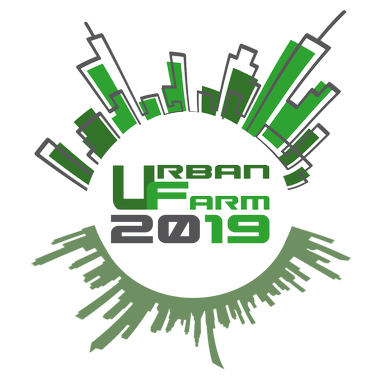
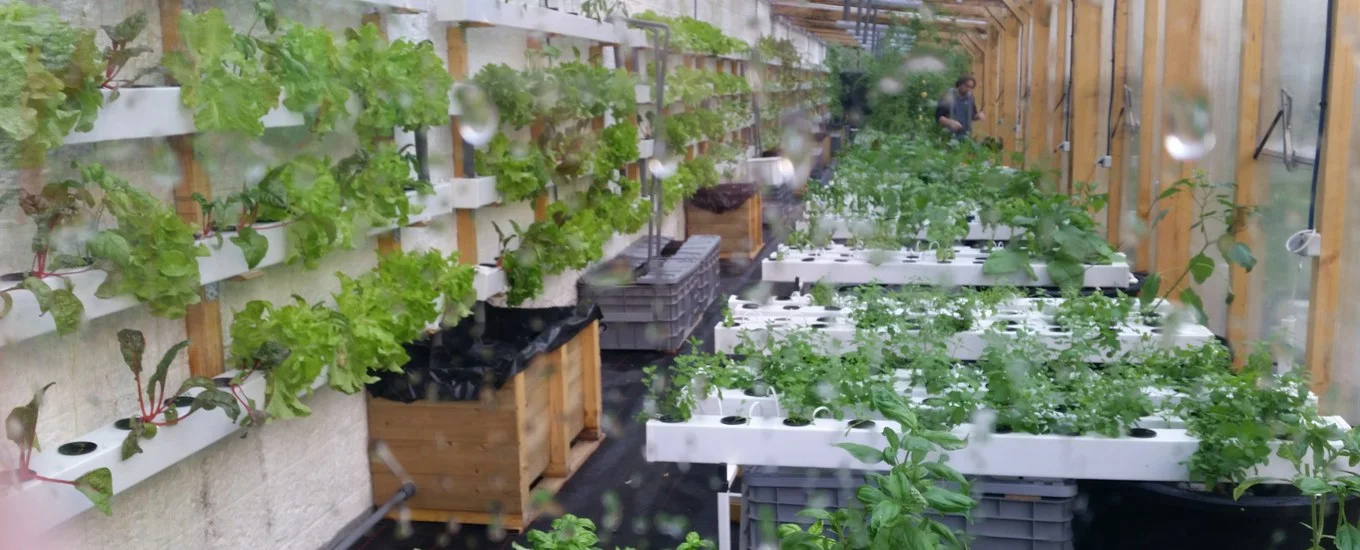
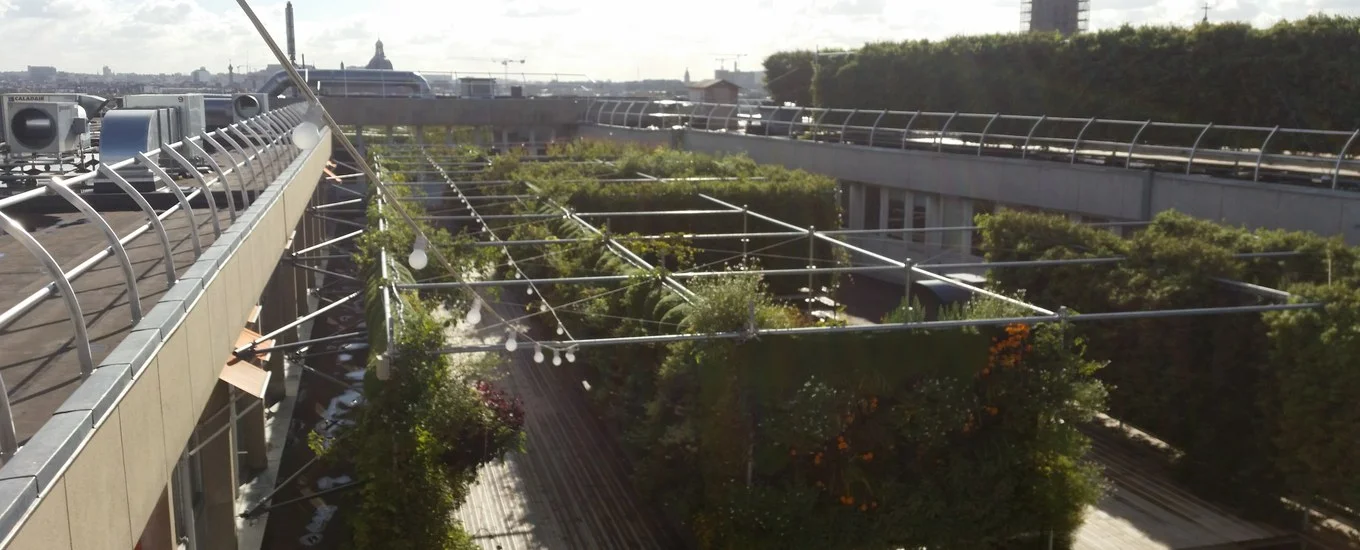
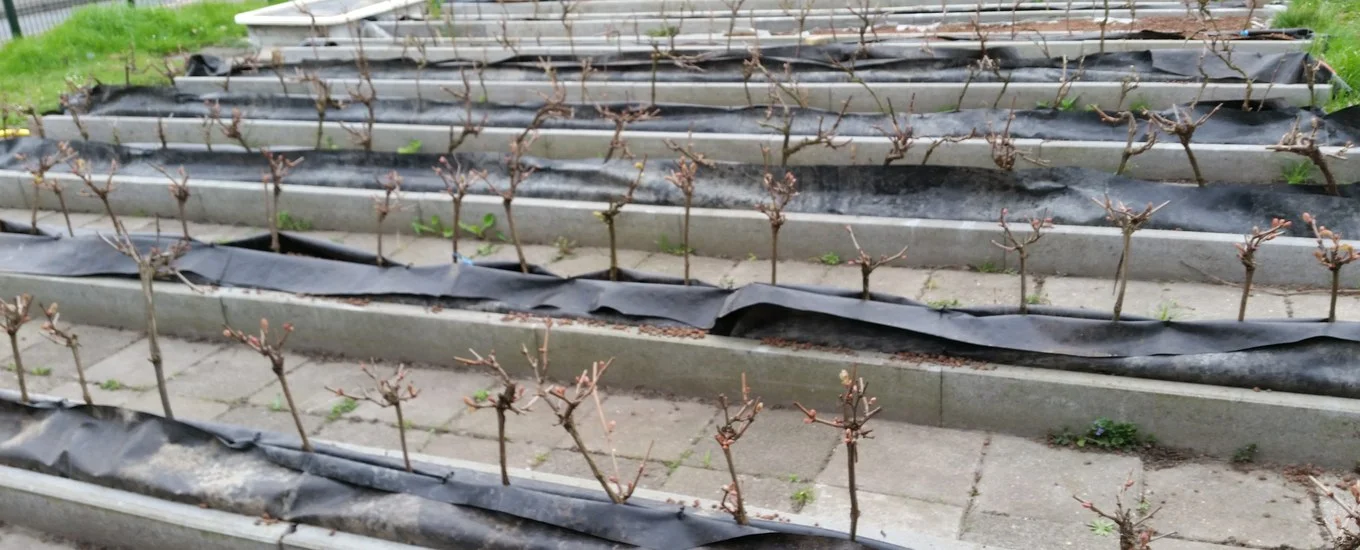
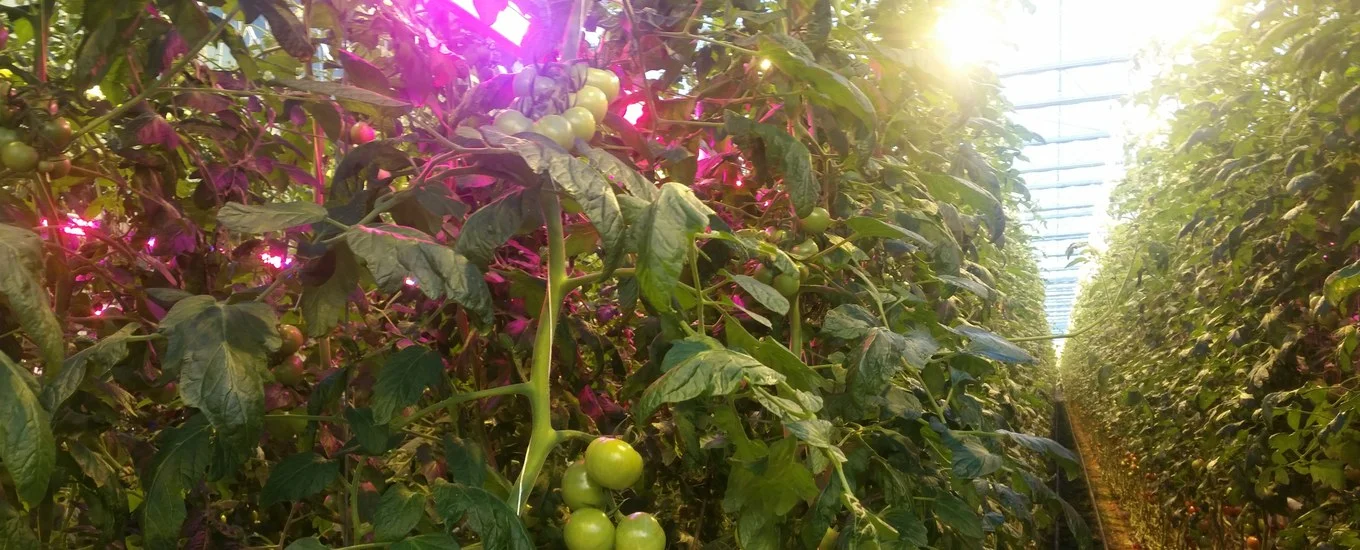
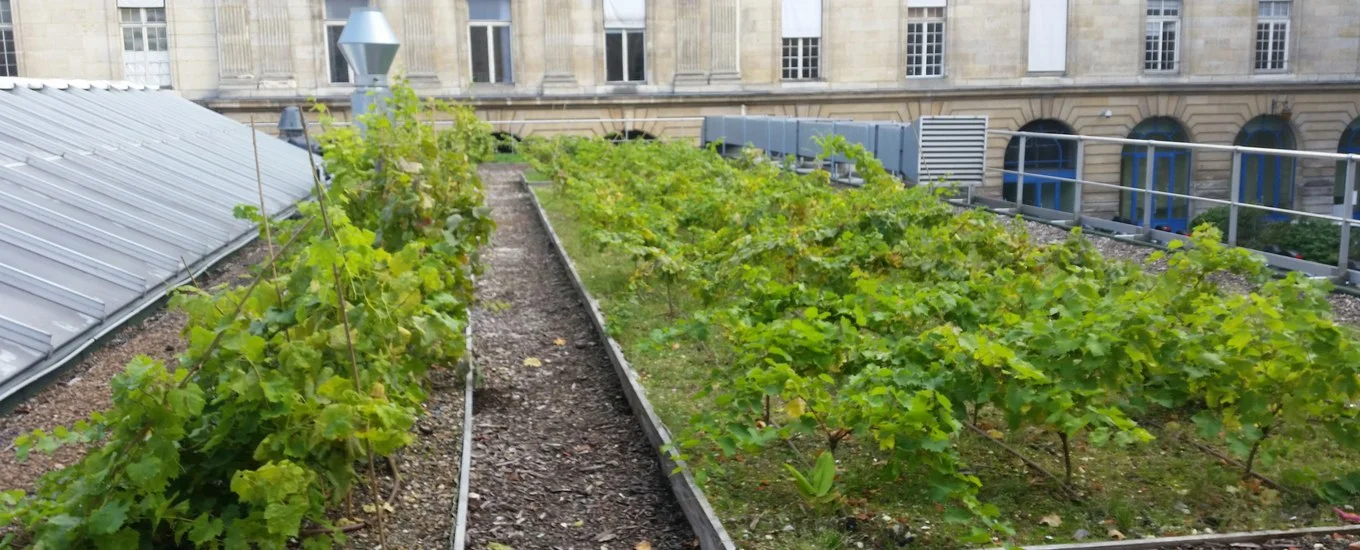
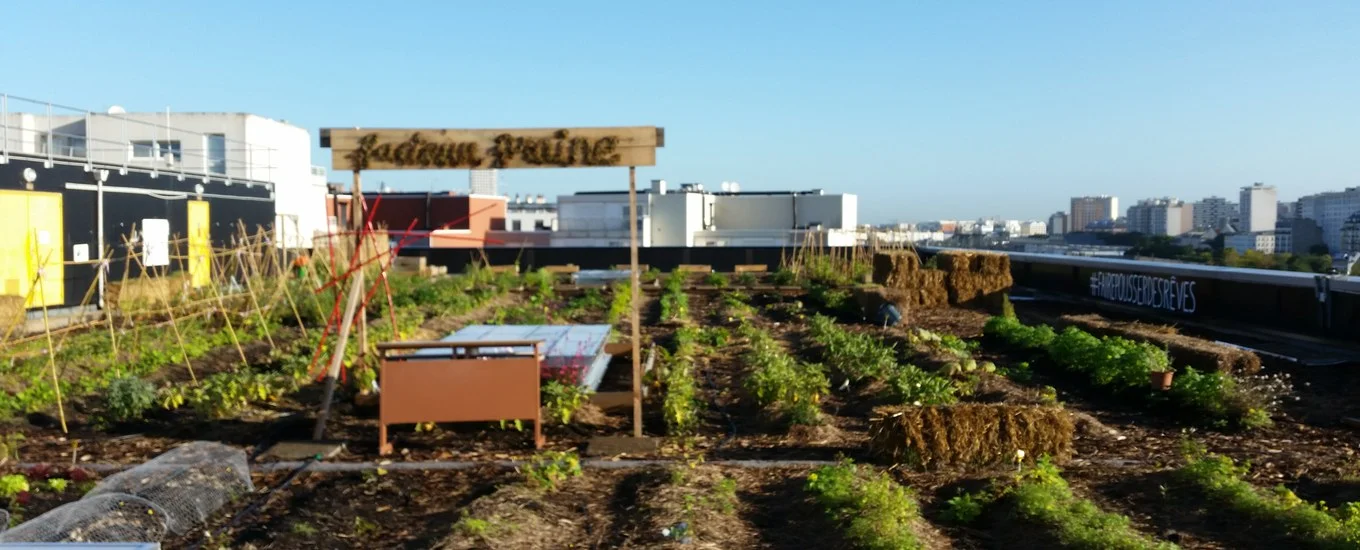
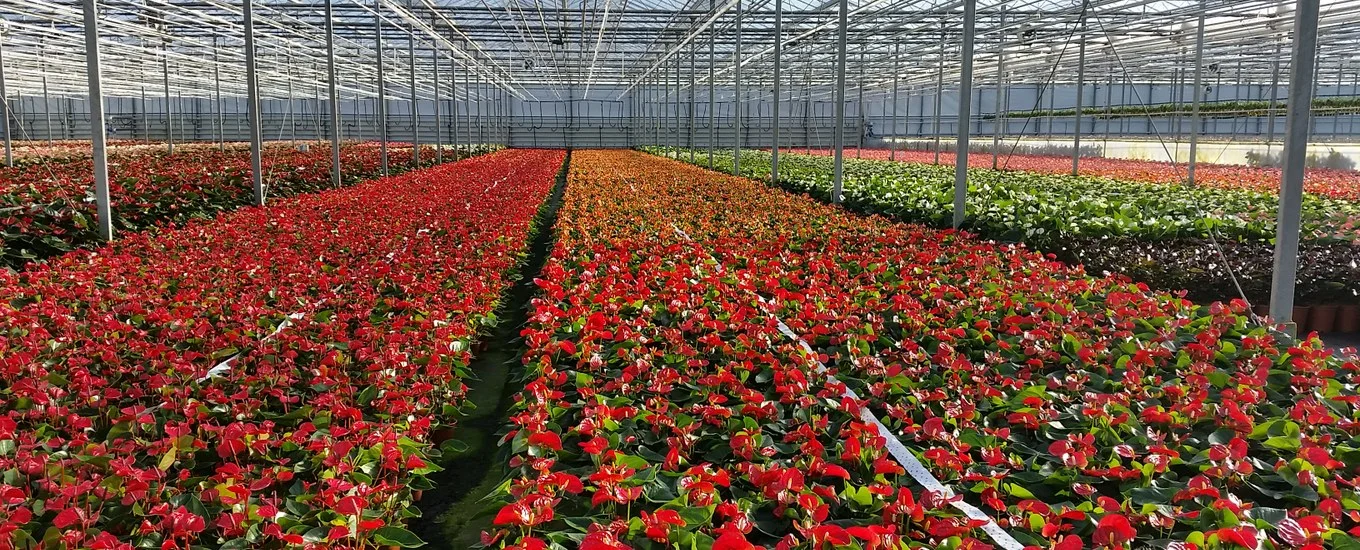
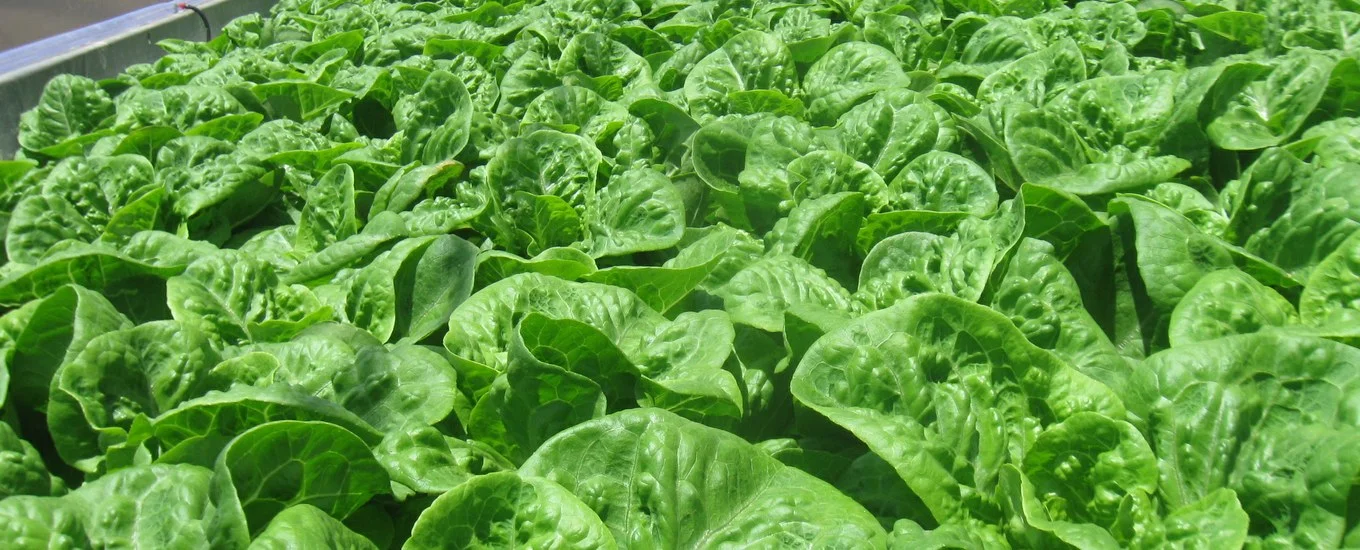
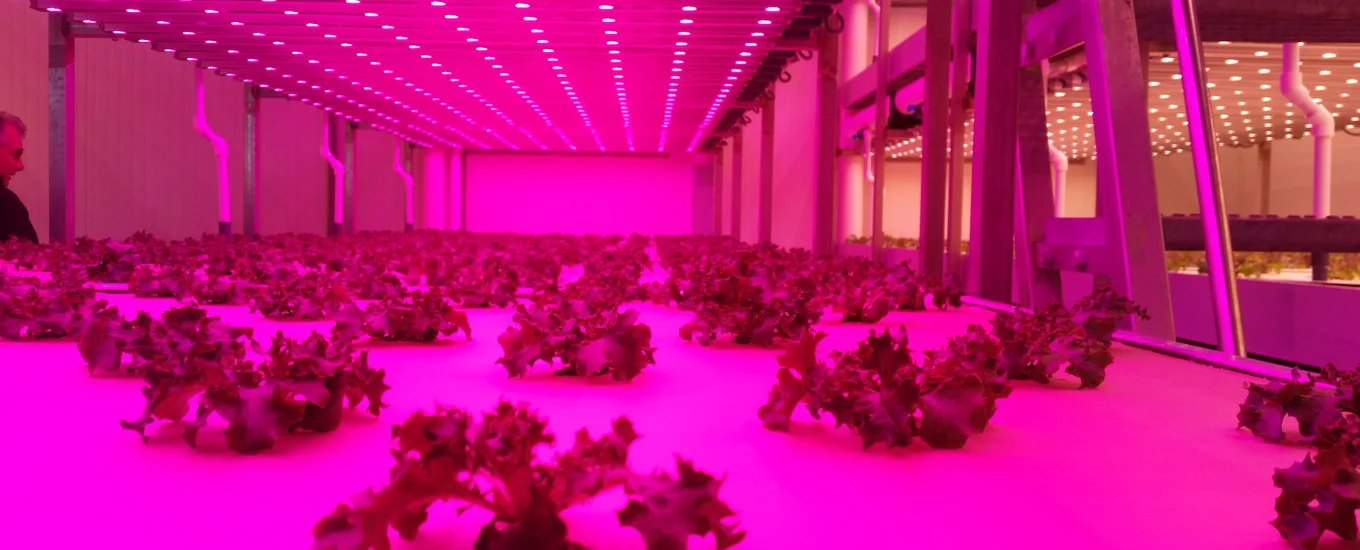
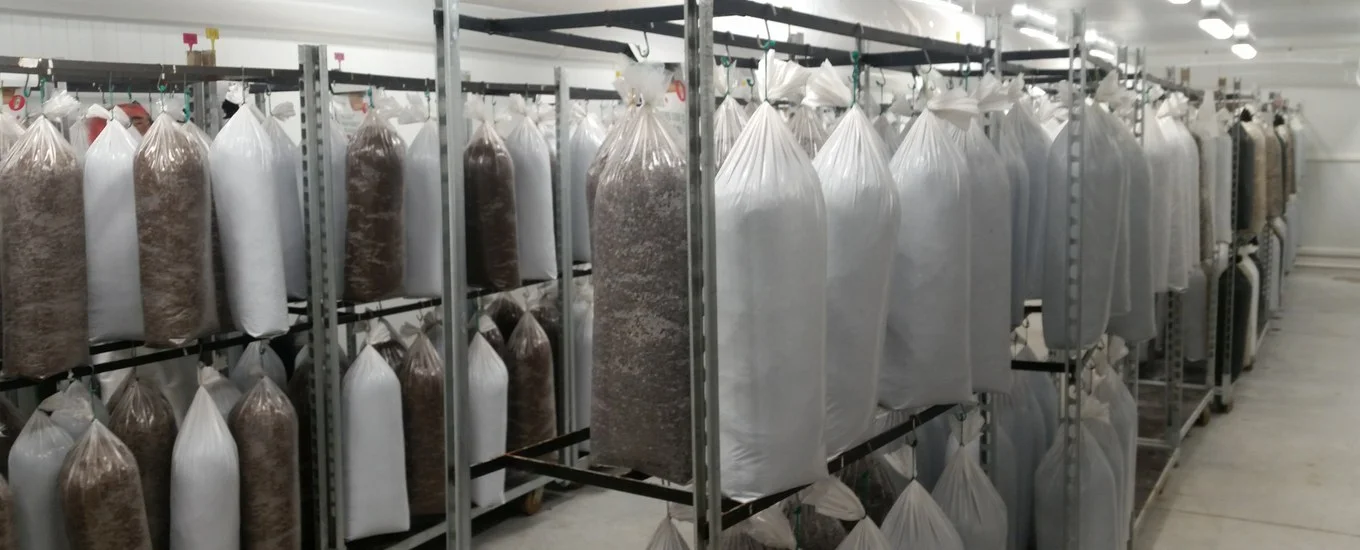
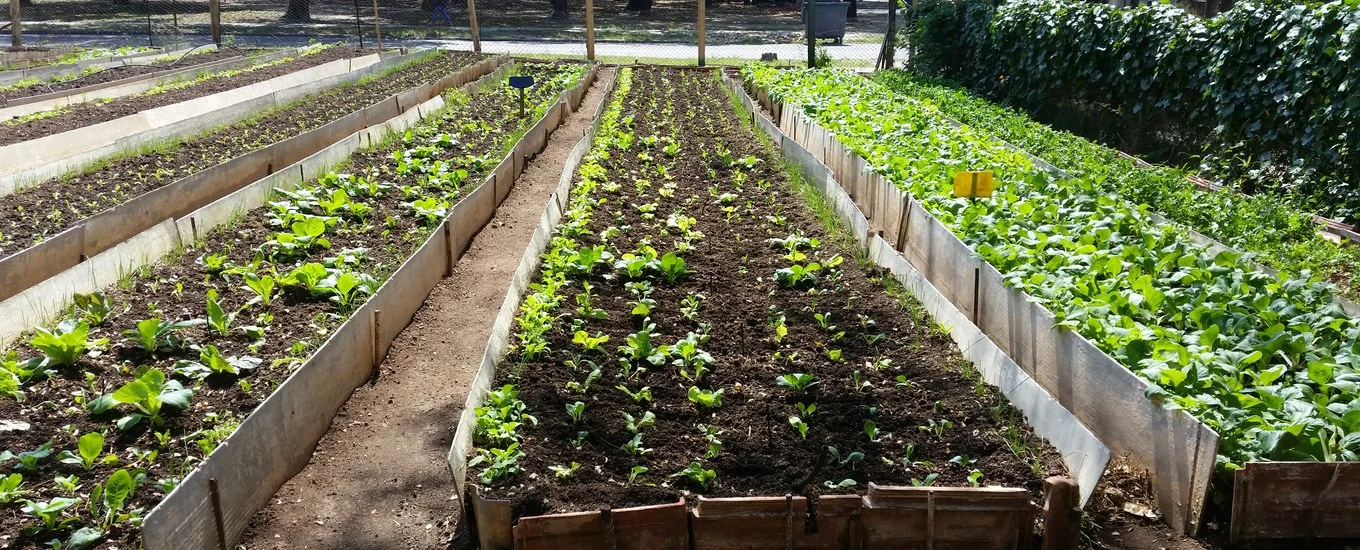
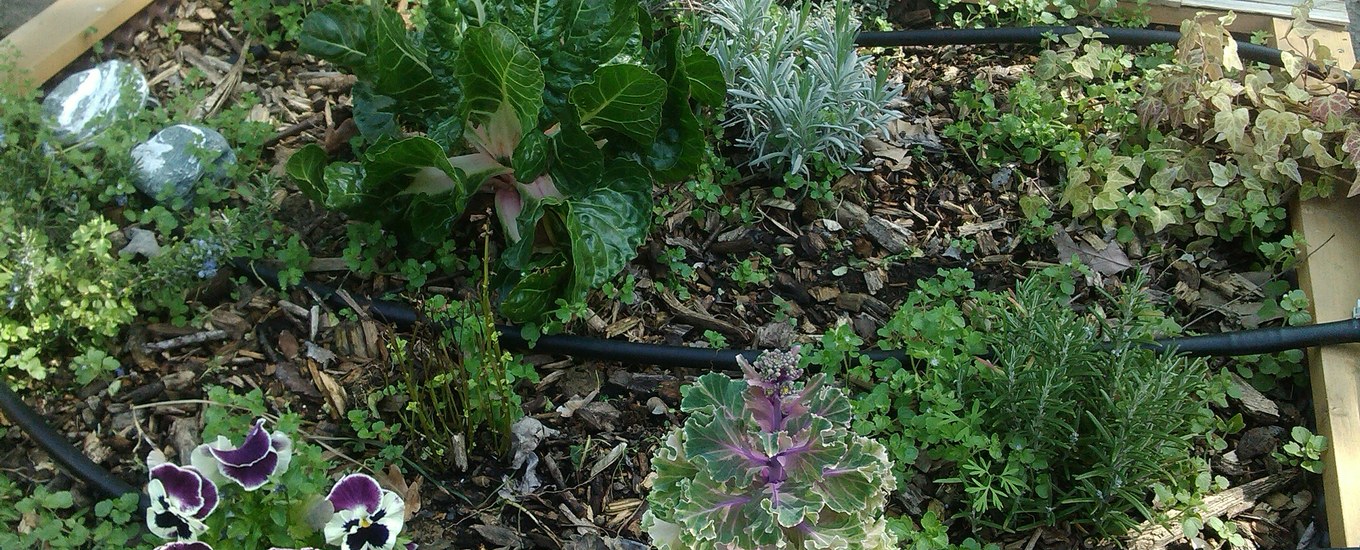
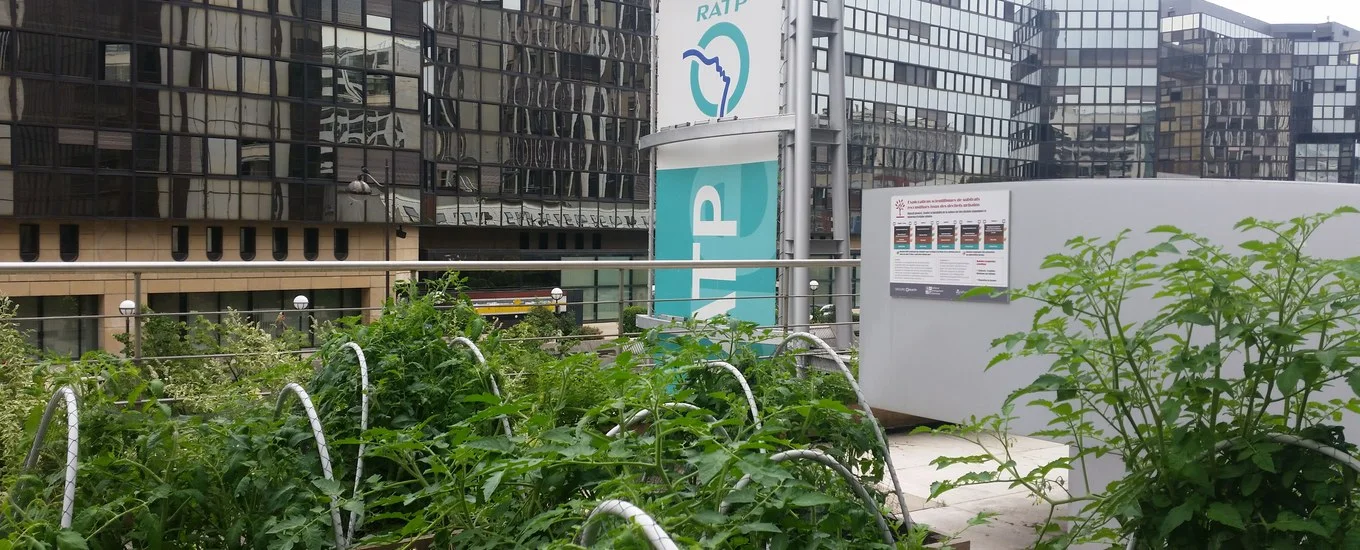
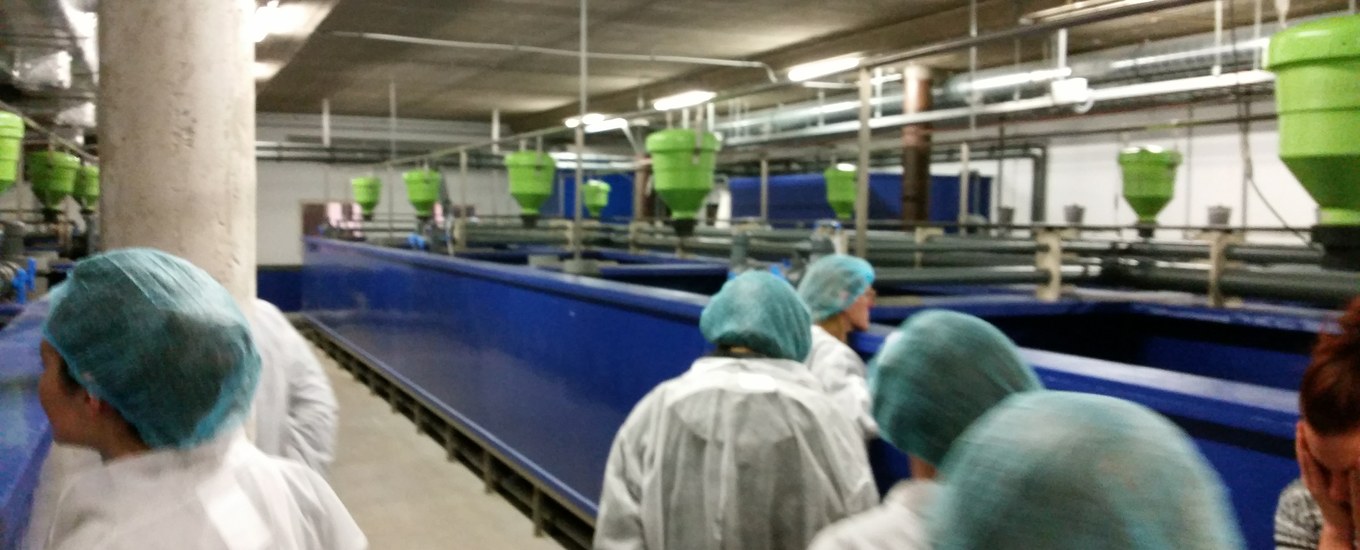
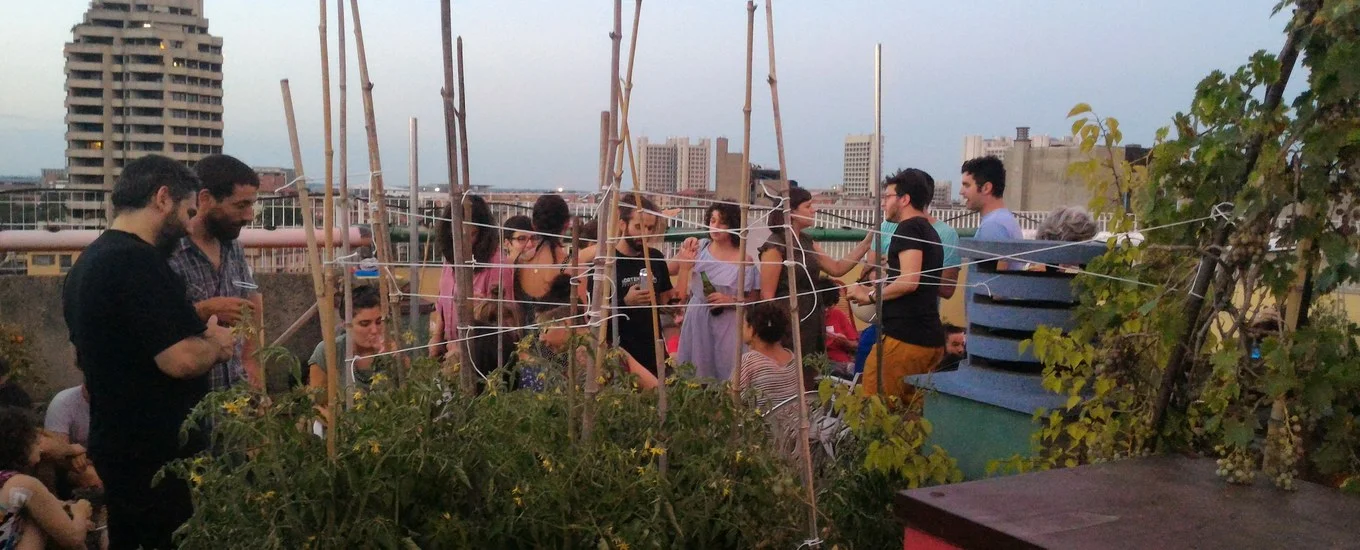







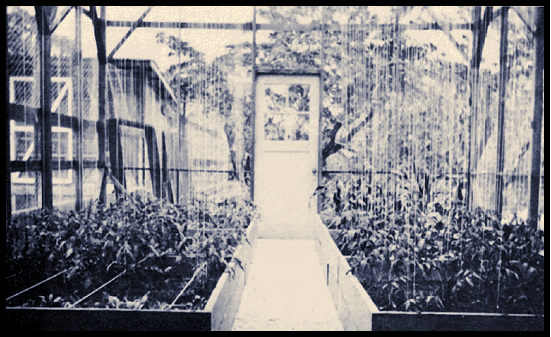
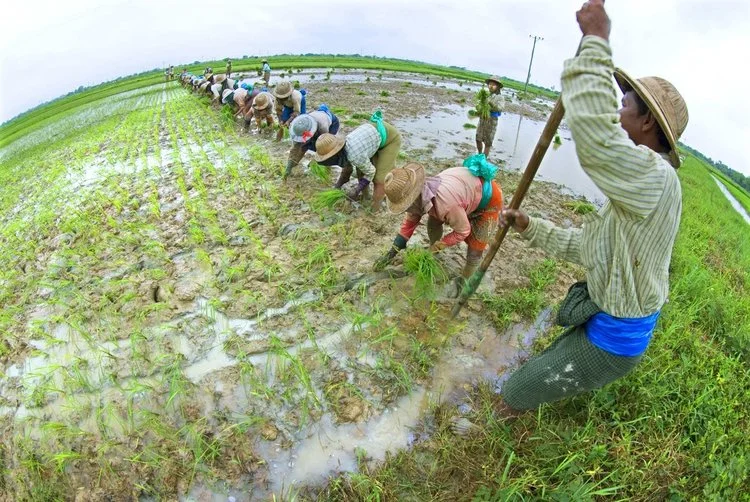







![AIAB_Cover+Edited[1].jpg](https://images.squarespace-cdn.com/content/v1/57c8695d5016e11e71be1d83/1536806133233-BJJJQTMNQE3A407H5R1N/AIAB_Cover%2BEdited%5B1%5D.jpg)
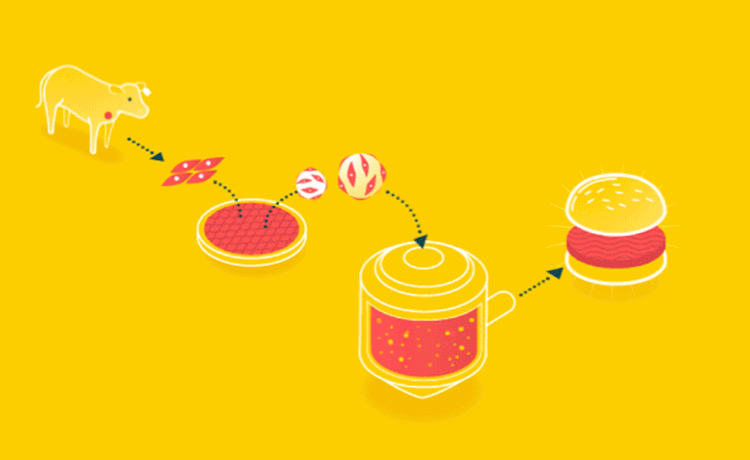


















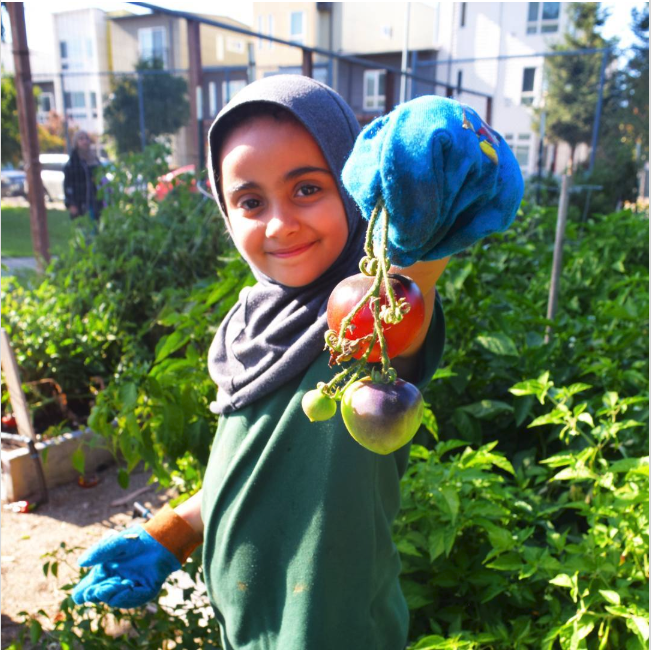


![[Photo: ReGen Villages]](https://images.squarespace-cdn.com/content/v1/57c8695d5016e11e71be1d83/1534760237080-2520TS7R23O8T7ZR9D2M/eco+village-2.jpg)
![[Photo: ReGen Villages]](https://images.squarespace-cdn.com/content/v1/57c8695d5016e11e71be1d83/1534760323234-E8PYCK6PT7ZLEV48UXZ5/eco+village-3.PNG)
![[Photo: ReGen Villages]](https://images.squarespace-cdn.com/content/v1/57c8695d5016e11e71be1d83/1534760367146-N6LO14QFMR1T625FFX3A/eco+village-4.jpg)